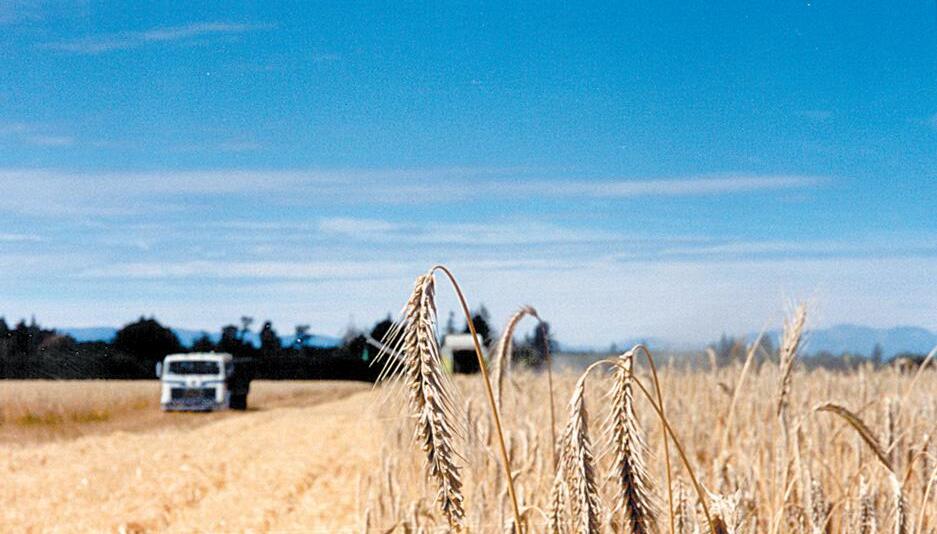

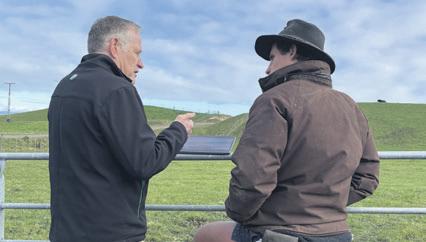
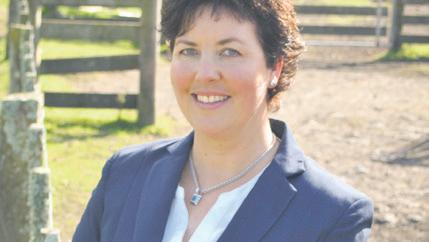
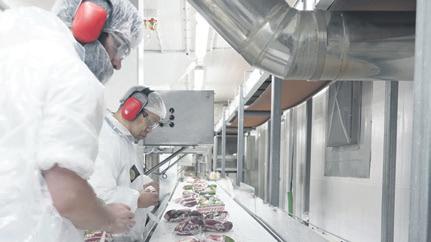
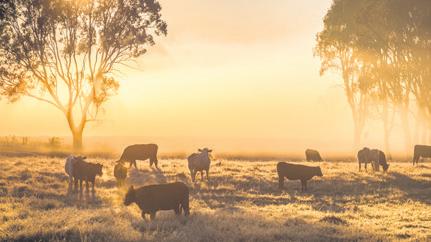













Positive: HortNZ chief executive Kate Scott is one of those delighted with the results of the latest Situation and Outlook for Primary Industries report
Ministry for Primary Industries which paints a rosy picture for the farming sector.




















Positive: HortNZ chief executive Kate Scott is one of those delighted with the results of the latest Situation and Outlook for Primary Industries report
Ministry for Primary Industries which paints a rosy picture for the farming sector.
The Ministry for Primary Industries’ latest Situation and Outlook for Primary Industries report makes for some positive reading for the country’s farming community.
Minister for Agriculture Todd McClay said the report confirmed what kiwis knew, that “our produce is world best with food and fibre exports surging”.
“We’re on track to hit nearly $60 billion in export revenue by the end of June, a record level.”
Some of the highlights of the latest Situation and Outlook for Primary Industries (SOPI) report for the year to June 30 included revealing that dairy export revenue had lifted by 16% to reach a record $27 billion, meat and
wool export revenue was up 8% to $12.3 billion, horticulture export revenue grew by 19% reaching $8.5 billion while forestry export revenue jumped by 9% to $6.3 billion.
The report forecast shows New Zealand’s red meat sector will continue to be a strong driver of economic growth, with a lift in key meat export prices expected due to tighter global beef and lamb production.
Higher export prices for most products are forecast to be partially offset by lower volumes of beef and lamb.
Sheep and beef farm profit before tax is forecast to increase 89% in 2024-25 due
to higher farm revenue, more than offsetting higher farm expenditure. This lift in profitability follows falls in the previous three years.
Meat Industry Association chief executive Sirma Karapeeva said the improved forecast highlights the sector’s importance to the New Zealand economy.
“We’re expecting an uplift in key export prices, driven by reduced global production of beef and lamb and continued strong international demand for red meat,” Karapeeva said.



















] with Bessie Paterson llB ] Ronald W Angland & Son
It is therefore important that each and every one of us has a basic understanding of our rights to privacy and to avoid risks whenever possible.
The organisation which investigates breaches of privacy is the Office of the Privacy Commissioner. Back in the day, as far back as 1993, when computers became an essential part of our lives the Privacy Act was passed into our law and it was the source of the law on privacy in New Zealand at that time.
Since then, the various Governments have reviewed the law of privacy and the current law on privacy is included in the Privacy Act 2020.
A breach of privacy mainly occurs when an institution who we trust fails to keep our in-


Everybody wants to keep their personal and sensitive details private and the institutions we trust with our personal details are obliged to do that.
formation safe whether it is as a result of negligence, carelessness, mistake or a refusal to provide us with our information.
In many cases, a breach of our privacy can cause significant harm, as we have seen instances where someone has left files and other repositories, say, on the roof of a car.
They then drove off, with the contents of the files being scattered all over the road for anybody to read and gossip about with their mates, or in the worst case, it could fall into the hands of a tabloid journalist or criminal who could take advantage of the error for their own benefit.
Some years ago, there was a case where a police officer left a customer’s file on the seat of their car with the customer’s details
face-up for anyone who was interested or curious to read.
The 2020 Act retained the basic principles as they were under the previous legislation, but it also introduced some new principles.
Every business or institution which holds sensitive or private information, especially hospitals and government departments, is required to report a breach of privacy as soon as practical to both the person to both the person whose privacy they should be protecting and the Office of the Privacy Commissioner.
If the organisation fails to do so they may be liable for increased monetary penalties.
If an overseas enquiry for sensitive information is received by an NZ organisation it is mandatory for the NZ organisation to ob-
tain the person’s express consent to the disclosure of the information after they have been advised that an overseas organisation may not protect the information as closely as closely as required in NZ.
This is especially the case where overseas businesses are trading in NZ and their country of origin may not have the strict rules on privacy which we have in NZ.
If you feel that your privacy has been breached, it is always good to talk to the organisation first but if the problem cannot be fixed a call to the Office of the Privacy Commissioner will help to get things going.
This Article has been prepared by Bessie Paterson a partner at Ronald W Angland & Son, lawyers, 2 Chapman Street, leeston.
world-class products from New Zealand.






“This year, we’ve seen growth in value to most of our major markets, which is pleasing. There’s robust demand for New Zealand beef and sheepmeat from the United States, a significant increase in sheepmeat volumes to the European Union, and a recovery in exports to China.
“However, it is important to remember that greater export revenue for the horticulture sector does not necessarily translate into greater profitability for growers because they are facing increased costs of production, so we need to ensure that value is also returned to growers.
“The ability to grow the sector into the future is directly related to the profitability of horticulture businesses.”








“These results reinforce the red meat sector’s critical role in supporting New Zealand’s economy, particularly in our rural and regional communities.”
A Horticulture New Zealand (HortNZ) said the report forecasting strong export growth for New Zealand’s horticulture sector reinforces the industry’s growing importance to the national economy, says.
Scott said the strong outlook supports the sector’s target of doubling farmgate value by 2035, as outlined in the Aotearoa Horticulture Action Plan.
“It also reinforces the need for policy settings that enable the sector to grow nutritious, affordable fruit and vegetables.







The 19% growth in horticulture export revenue is primarily being driven by the kiwifruit industry, with exports expected to reach $3.9 billion, following a record 2024 crop with forecasts for an even larger crop in 2025.

Apple and pear export revenue is forecast to increase 18% to $1.1 billion, the first time it has passed $1 billion, which is supported by increases in export volume and average price.
Vegetable exports are forecast to grow 8% to $770 million, driven by increases in export volume and firm pricing for frozen and processed products.
HortNZ chief executive Kate Scott said the forecast was great news for growers, regional economies and the New Zealand economy.
“The horticulture sector continues to go from strength to strength,” Scott said.
“Our growers, exporters and supply chain partners deserve huge credit for their resilience and commitment to delivering
“The Government’s proposed changes to the National Policy Statement for Highly Productive Land, including recognising the national importance of vegetable production and enabling water storage and managed aquifer recharge, are a positive step in the right direction.”
The positive mood in the rural community has been backed up by the latest Rabobank Rural Confidence Survey.
The quarter two survey showed farmer confidence in the broader agri economy remains at a near-record high with the country’s farmers across all sectors looking favourably at the 12 months ahead.
Following consecutive lifts in the previous three quarters, farmer confidence in the broader agri economy was unchanged at a net reading of +44%, which is the secondhighest net reading recorded across the past decade, with only quarter two 2017 higher (at +52%).









Canterbury wool growers are set to benefit from a new initiative between two iconic New Zealand companies aimed at growing the consumer brand value of ethically and sustainably produced New Zealand wool.
] by Kent Caddick
PGG Wrightson and Norsewear are pioneering a new value chain which connects New Zealand wool growers directly with trusted consumer brands like Norsewear, which they say will boost returns for wool growers and the sector.
PGG Wrightson Chief Executive Stephen Guerin said the two companies believe there is potential for New Zealand wool to deliver greater value to growers, rural communities, and New Zealand, if they do things differently.
“By connecting specific growers with select manufacturers we’re providing certainty of demand for these growers through longterm supply orders,” Guerin said.
“This ensures manufacturers have certainty of supply of fully traceable New Zealand wool that meets their specifications.”
He said PGG Wrightson Wool’s quality assurance brand, Wool Integrity NZ is key in the value chain, certifying that the wool comes from independently audited growers who meet world-leading animal welfare and environmental sustainability standards.
Norsewear owner Tim Deane said the partnership allows Norsewear to capitalise on growing consumer demand globally for products which are ethically and sustainably made from traceable quality natural fibres.
“We grow the best wool in the world and haven’t made the most of it,” Deane said.
“Over the years some iconic iwi brands have moved away from using 100% New Zealand wool. It’s been commoditised and diluted with other wools to reduce prices for manufacturers, and wool sector pricing has been heading in the wrong direction.
“It’s been tough for our farmers. We’re looking to reverse the trend. By ensuring a fully integrated value chain, we’re ensuring that when consumers choose Norsewear they experience the quality and provenance of 100% New Zealand wool products, and over time growers will reap better returns.”
Deane said he sees significant growth and export opportunities for the sector through the partnership.
“As Norsewear transitions to a fully traceable value chain and grows, we’ll not only be able to buy more New Zealand wool at fair
prices but also create jobs in regional New Zealand as we expand manufacturing. We want to encourage other companies to take this approach.”
Rachel Shearer, General Manager PGG Wrightson Wool said the goal of the partnership is to build confidence in this new value chain over time and to encourage other brands to join the programme.
“As we demonstrate success, we welcome other New Zealand consumer brands to join us to benefit the industry as a whole,”
Shearer said.
“It will also support the links and connections between our growers and rural communities who will be able to go into one of our local stores or online, buy garments that use the wool they grew and wrap their families in them.”
The Wool Integrity quality assurance mark will be added to Norsewear’s packaging as the transition progresses. Norsewear products are available in PGG Wrightson’s 90 retail outlets and online shop, as well as through other rural retail and online outlets.




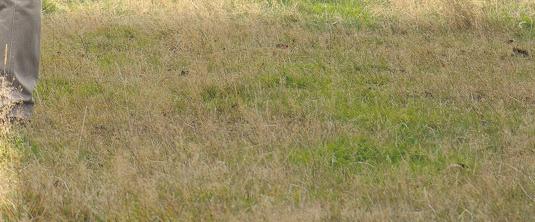


‘As we demonstrate success, we welcome other New Zealand consumer brands to join us to benefit the industry as a whole.
Rachel Shearer
Wool General Manager, PGG Wrightson













Minister for Agriculture
There’s something special about Fieldays. Every year, it brings together the people who keep New Zealand growing: the farmers, foresters, growers, and agritech innovators who power our economy. This year’s event felt particularly significant.
After some tough years, you could feel the confidence returning. It’s not blind optimism, but a quiet, determined belief that we’ve turned a corner. The mood on the ground was positive, forward-looking, and grounded in reality. And frankly, it should be, because the numbers back it up.
This month’s Situation and Outlook for Primary Industries (SOPI) report confirmed what kiwis know, our produce is world best and food and fibre exports are surging. We’re on track to hit nearly $60 billion in export revenue by the end of June, a record level.
Highlights include: Dairy export revenue lifting 16 per cent to reach a record $27 billion; meat and wool export revenue increasing 8 per cent to $12.3 billion; horticulture export revenue growing by an impressive 19 per cent reaching $8.5 billion; forestry export revenue jumping 9 per cent to $6.3 billion; and Seafood export revenue lifting 2 per cent to $2.2 billion.
That recovery starts at the farm gate. It’s being built by the 360,000 men and women working across our regions, families who’ve weathered inflation, droughts, storms, and policy uncertainty. They don’t ask for special treatment, just clear signals, the tools to succeed, and a government that backs them. That’s exactly what this Government is delivering.
At Fieldays, we announced a $17 million partnership to develop resilient, high-performing pastures tailored to New Zealand conditions.
That’s not just science for science’s sake, it’s practical work that will improve yields, cut

regrassing costs, and lift profits across the board.
We’re also investing in rural resilience and mental health, with over $11 million committed to frontline services and local initiatives through our new Rural Wellbeing Fund. This isn’t just about responding to crisis. It’s about strengthening the communities that power New Zealand’s economy.
In the global marketplace, we’re pushing hard to get our exporters ahead. Our new
Grass-Fed certification scheme is one more example. It gives our red meat and dairy producers a trusted, internationally recognised standard to take on competitors who don’t farm to the same standards we do.
All of this is part of a bigger goal: to double the value of our exports in 10 years. It’s an ambitious target, but New Zealand agriculture has always punched above its weight.
With the right investments in productivity, biosecurity, and trade, we will deliver it and
‘
With the right investments in productivity, biosecurity, and trade, we will deliver it and ensure better returns and greater certainty for farm businesses up and down the country.
ensure better returns and greater certainty for farm businesses up and down the country.
To all our farmers on the ground, thank you. You continue to lead our economic recovery with resilience, skill, innovation and hard work.
We’re not just getting back on track, we’re building momentum, and with agriculture leading the way, New Zealand’s best days are ahead of us.












One thing I keep hearing from rural New Zealanders is the importance of relationships. Strong relationships don’t just happen, they take trust, consistency, and time.
This means we’re willing to have robust and respectful conversations. What matters is that we’re willing to sit down, have the tough conversations, and keep showing up.
That’s why I’m proud of the work Labour has been doing to keep those conversations going. At the recent Farmers Forum, I joined many of my Labour colleagues, along with representatives from DairyNZ, Beef + Lamb, Rural Women NZ, Horticulture NZ, IrrigationNZ and Federated Farmers.
It’s not easy to get everyone in the same room, or out on the same farm, but it shows we’re serious about building trust and understanding.
We covered a lot of ground: pest control, local government, gene technology, environmental standards, and backing our farmers. One key discussion was the proposed shift from traditional resource consents to riskbased, certified farm plans. There’s strong support for reviewing regulations, but we
can’t lose sight of our long-term goals like swimmable rivers. The right balance means smart regulation.
We were also out and about at National Fieldays, visiting MPI’s Science for Farmers tent, the Innovation Hub, joining discussions at the Rural Advocacy Hub, and meeting with stakeholders such as Halter, Zespri, and Ballance Agri-Nutrients.
Our Fieldays Labour stall was a hive of conversation, with rural New Zealanders sharing what matters most to them:
• the cost of living
• access to healthcare
• the future of our rural communities from land-use change to school access
• support for business
• better connectivity – including internet and postal services
• natural disaster resilience
These are the issues that shape wheth-
er farmers can get ahead, and whether rural New Zealand can continue to thrive.
Labour has a strong history of backing rural New Zealand. We signed game-changing free trade deals with China, the United Kingdom and the European Union boosting exports, and opening up new markets for dairy, meat, and horticulture.
We tackled Mycoplasma bovis head-on. We launched a Rural Health Strategy. And we worked with farmers to support innovation and protect our reputation for high-quality, sustainable produce.
The progress is under threat. The current Government has slashed research funding, cutting investment in sustainable land-use and emissions research, and are winding down Predator Free NZ.
A strong future for rural New Zealand is something we all have a stake in, and by keeping these conversations going, we can achieve it together.

Ravensdown has launched a pilot programme across 18 farms to trial HawkEye Pro, a new system that could reduce fertiliser costs, drive precision application and improve production for New Zealand’s livestock, dairy and arable farms.
] by Kent Caddick
HawkEye Pro uses deep learning, a branch of artificial intelligence (AI), decades of soil data, and cutting-edge mapping software to create detailed maps of soil nutrient levels across an entire farm without the need for a fresh round of soil testing.
“We’ve combined our deep expertise in soil science with the latest in digital technology to produce a tool that will make a tangible difference for farmers and growers,” Ravensdown’s head of product and service development Mike White said.
The patent pending software ties into the existing HawkEye platform and uses data already in the system including previous soil tests to predict soil nutrient levels down to a 10x10 metre cell for livestock farms.
White said HawkEye Pro uses the soil nutrient status predictions to produce maps of where fertiliser should, and importantly should not, be placed, calculating the right product and rates.
“We’ve been working towards this software for 20 years and now the emerging technology has allowed us to deliver on our vision.”
White said the precision fertiliser plans could deliver a total cost reduction between $50 to $150 per hectare through efficient placement and rate selection of fertiliser and
resulting increase in land productivity where soil fertility is holding it back.
The pilot involves 13 dairy farms across both islands, and five sheep and beef operations in North Island hill country.
White said the goal of the pilot was to ensure the enhanced fertiliser plans produced are practical, and usable.
“The feedback we have already received from those using the pilot-software has been positive.
“One farmer told us they were under pressure to combine information for NZFAP audits, and this tool has really helped. It does that environmental thinking automatically as part of the fertiliser plan,” White said.
HawkEye Pro is the evolution of HawkEye, technology released by Ravensdown in 2017 which integrates mapping, nutrient trending, and decision support tools into a single platform.
“The new evolution will bring more detailed nutrient insights, integrate AI to provide more specific feedback and recommendations, and will have the ability to generate a precise fertiliser plan tailored to a farm.”
An early limited release for livestock farming is set for September 2025. The tool will be available for dairy farmers from autumn 2026 and will be available for the arable sector as new functionality drops during 2026.
At the gate: Mike White, Ravensdown Head of Product and Service Development discussing HawkEye Pro variable rate application with lucien Keightly, Farm Manager at Kiwikawa Farm in the Hawke’s Bay.
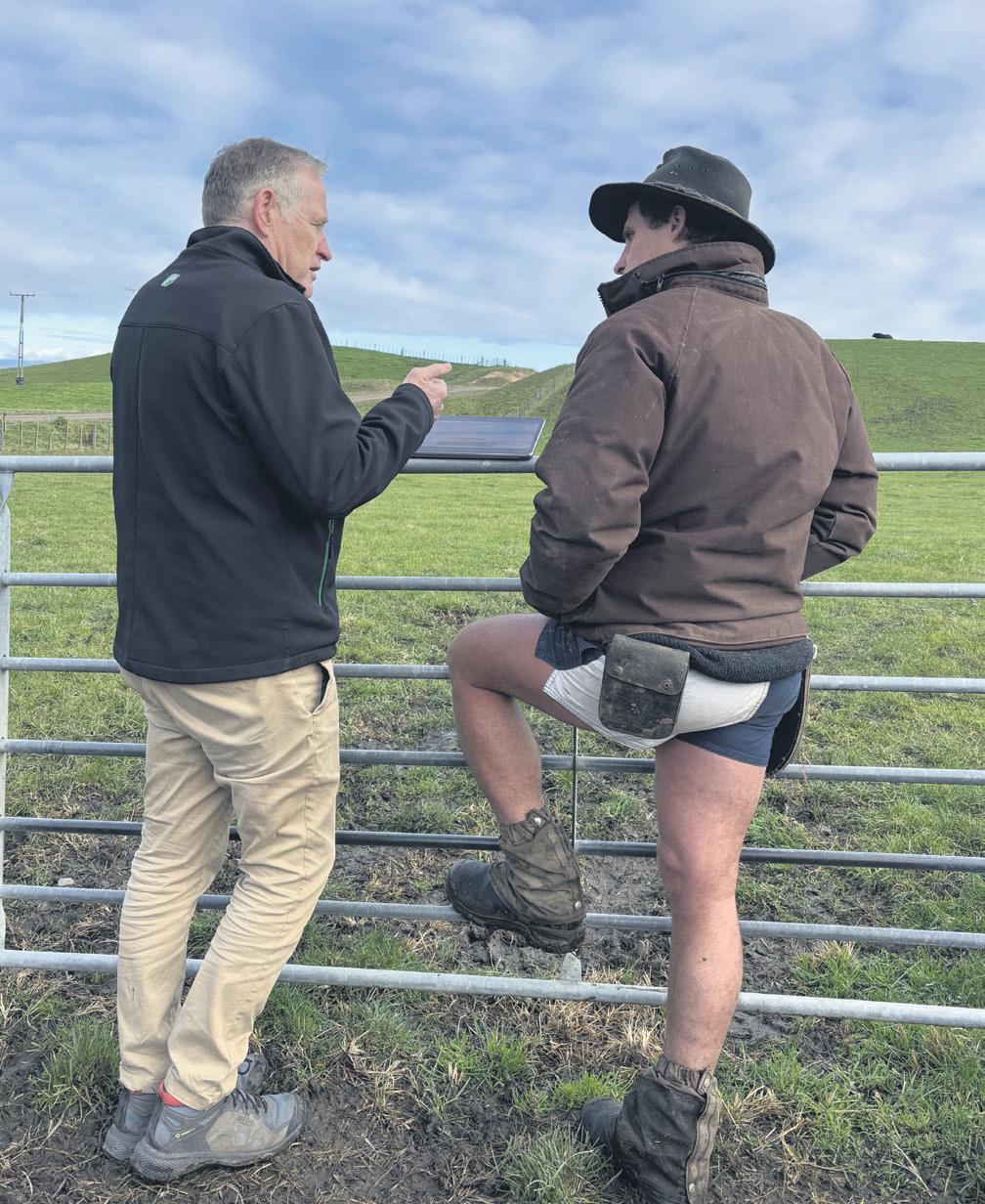




Vegetation falling on lines is one of the leading causes of power outages on our network. It also creates a major safety risk.
The Electricity (Hazards From Trees) Regulations have been updated, with stricter requirements for tree owners. For more about the Regulations, your responsibilities, and important safety information, visit oriongroup.co.nz/trees
We recommend using trained professionals and if you have any questions, call us anytime on 0800 363 9898. We’re here to help.









Since the Residential Tenancies Amendment Act 2024 (“Amendment Act”) came into force on 30 January 2025, many farmers in Canterbury (and elsewhere) will have been affected by this legislative change.
The Amendments Act introduced significant changes to New Zealand’s tenancy laws and the Residential Tenancies Act 1986 (“Act”).
While these amendments primarily target urban rental markets, they also have implications for rural landlords, including those who provide accommodation to seasonal or permanent workers.
Farm housing arrangements often fall under ‘service tenancies’ where accommodation is provided as part of employment.
Compared to most other residential tenancies, service tenancies have shorter notice periods for termination and are linked to the employment/service agreement between the landlord and tenant.
In essentially all other respects, employers offering accommodation to workers must ensure compliance with the Act’s provisions.
The Amendment Act reintroduces ‘no cause’ terminations for periodic tenancies, allowing landlords to end a tenancy with 90 days’ notice without providing a specific reason.
The notice period for ending a periodic
tenancy for a specific reason (such as the owner, or their family member, requiring the property to live in as their main residence) has now been reduced to 42 days.
However, for service tenancies, the notice period remains at 14 days from notice being given under the employment/service agreement (or termination of same).
Fixed-term tenancies now automatically convert to periodic tenancies, unless either party provides notice between 90 and 21 days before the term expires.
This provision offers both parties the option to reassess accommodation needs at the end of a fixed term, rather than the fixed term tenancy becoming a periodic tenancy, in many cases by operation of law (unless cancelled by the tenant).
Landlords can require a pet bond of up to two weeks’ rent and may refuse pet ownership on reasonable grounds. To keep a pet in a rental property, the tenant will have to get written consent from their landlord, who may only refuse on reasonable grounds.
For instance, a landlord could refuse consent on the grounds that the premises are not suitable for the pet or pets, a relevant

rule or bylaw prohibits the pet or pets from being kept on the premises, or the tenant has not complied with relevant bylaws relating to the pet or pets.
Consequently, farmers and other rural landlords must ensure that their accommodation complies with the Act’s requirements, including:
• Written Agreements: All accommodation arrangements should be documented in writing, outlining the terms and conditions clearly.
• Property Standards: Ensure that the accommodation meets health and safety standards, including adequate insulation, smoke alarms, and sanitary facilities.
• Notice Requirements: Adhere to the appropriate notice periods when ending a tenancy, depending on whether it is a service or residential tenancy.
• Pet Policies: Establish clear policies regarding pet ownership, including any pet bonds and conditions for keeping pets.
Non-compliance with the Residential Tenancies Act can result in penalties, including fines.
The Residential Tenancies Amendment


Act 2024 introduced changes that affect all residential tenancies, including farm accommodation arrangements.
All landlords must review their housing policies and practices to ensure compliance with the new legislation. By doing so, they can maintain positive relationships with their tenants and avoid potential legal complications.



















Global markets have largely recovered following Trump’s 90-day pause on trade tariffs above 10%, opening the door for negotiations. In fact, many major share markets, including those in the US and Europe, are now flat to higher for the year.
That said, policy uncertainty remains high. A US court recently ruled that Trump’s use of emergency powers to impose tariffs was illegal. Trump, however, has made it clear he intends to push ahead with tariffs regardless of the legal outcome.
Alongside the trade drama, the US Republican Party is advancing their One Big Beautiful Bill Act. This US$5 trillion package is focused on long-term tax reform, with the aim of boosting consumer spending and voter support ahead of the 2026 midterm elections.
US markets have more than recovered from the sharp April sell-off, with many major global markets trading higher for the year. European markets have performed particularly well in 2025, supported by increased defence spending and expectations of further interest-rate cuts.
Australian equities were initially caught in the global equity downturn amid concerns about slowing global growth. However, the ASX 200 has since rebounded and gained over +4% during the quarter.
Bond markets have also been volatile, driven by shifting inflation and interest-rate expectations in the US.
New Zealand recovery taking shape but it’s early days
Trump’s blanket 10% tariff means a hit to the $9 billion worth of exports to the US including meat, dairy, and wine, worth roughly 0.2% of
‘
NZ shares have continued to struggle recently, in part due to the global uncertainty and in part due to the still-tough backdrop for many domestic firms.
our GDP. But the bigger concern is the potential fallout if global trade slows more broadly.
As a small, export-heavy economy, especially with close ties to China, New Zealand could feel the knock-on effects of disrupted supply chains and weaker global demand. That said, there are bright spots. Commodity prices, especially for meat and dairy, have been climbing, helping support rural incomes.


Leeston (03) 324 3033 Email: lawyers@anglands.co.nz | www.anglands.co.nz
of Selwyn since 1965

We have seen regional New Zealand holding up much better than bigger centres in recent months. Plus, about 40% of our US export income comes from services like tourism, which aren’t hit by the tariffs.
The Reserve Bank of New Zealand (RBNZ) delivered another 25 basis-point interestrate cut in May, taking the Official Cash Rate (OCR) down to 3.25%.
While the international backdrop is creating a lot of uncertainty, we expect the RBNZ will most likely deliver another couple of rate cuts from here, taking the OCR below 3% in coming months.
If growth slows more than expected, then the RBNZ could step in with more interestrate cuts if required to keep things on track.
New Zealand shares have continued to struggle recently, in part due to the global uncertainty and in part due to the still-tough backdrop for many domestic firms.
But we see a more supportive outlook ahead. The local market is relatively defensive, our domestic economy is slowly improving, and

falling interest rates should provide a further tailwind. As rates drop, dividend-paying stocks are becoming more attractive to investors seeking income.
If you’d like to review your investment strategy or discuss your options in this environment, please get in touch. Andrew Wyllie is an Investment Adviser and Forsyth Barr’s Christchurch Manager. He can be contacted regarding portfolio management, fixed interest, or share investments on 0800 367 227 or andrew. wyllie@forsythbarr.co.nz.
This article was prepared as at 31 May 2025 and provides market commentary for the three-month period ending on that date. This column is general in nature, has been prepared in good faith based on information obtained from sources believed to be reliable and accurate, and should not be regarded as financial advice.







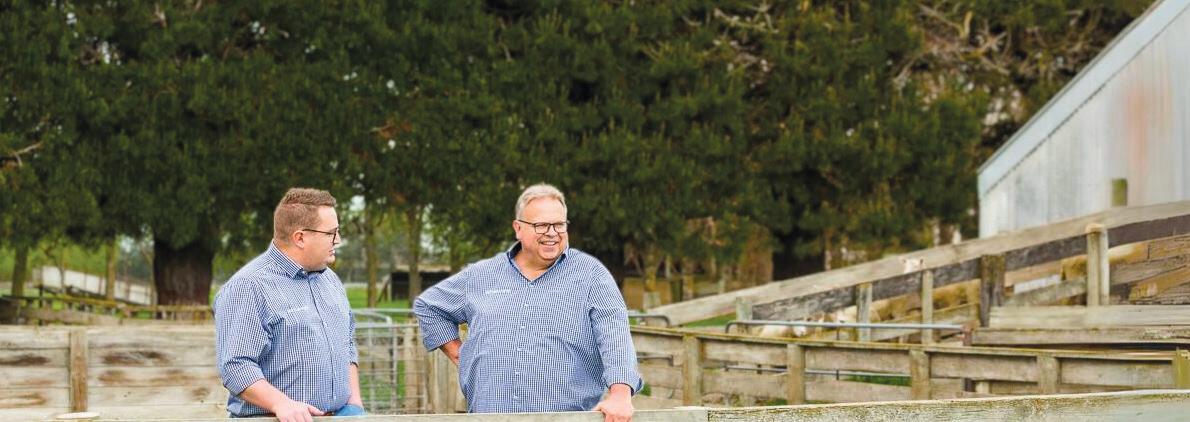















A great win for rural advocacy groups is how Federated Farmers is describing the Government’s announcement of a $4 million Rural Wellbeing Fund.
The announcement was made at the Federated Farmers Advocacy Hub at the Fieldays in Mystery Creek recently.
A five-member panel with representation from the primary sector will be established to assess project applications for access to the funding.
Projects must demonstrate strong local delivery, provide clear benefits to rural people, and ability to attract co-investment from industry and sector partners.
Federated Farmers president Wayne Langford has been one of those leading the way in pushing the Government to deliver increased investment into rural mental health.
Langford said it was an issue close to his heart.
“It’s hugely rewarding to get this across the line. I’m absolutely stoked the Government are making such a meaningful investment in the mental health of our rural communities,” he said.
“Federated Farmers have been involved every step of the way, but we haven’t been alone. The likes of DairyNZ, Beef + Lamb, Young Farmers and Rural Women have been right there with us.”
Langford said the extra $4 million in funding to expand the investment in communitybased wellbeing initiatives may be matched by industry partners, for a total pool of $8 million.
“The investment is significant in terms of the dollar amount, but the real value will come in having a much more coordinated approach that brings all the energy and focus into one place.
“In practice, we’re going to see the sector coming together to ensure we’re investing in the initiatives that bring the best results and make a real difference in people’s lives.
“That will cut out a whole heap of waste, remove all the duplication, and make sure every dollar invested in rural mental health is working as hard as it possibly can.”
Langford said as a country, we’ve moved past the stage of simply acknowledging and building awareness of the importance of strong mental health.
“It’s great that we’ve come such a long way with rural mental health awareness, but now it’s time for action.
“Supporting groups like Surfing for Farmers, Farmstrong, FirstMate and NZ Young Farmers, who are doing the mahi on the ground, is so important.”

Meaningful investment: Federated Farmers president Wayne langford is delighted at the Government’s move to set up a $4 million Rural Wellbeing Fund.
the initiative is that all the primary industry groups are united in the desire for action.
“With funding in place, we can now get some changes happening and make a real difference.”








We usually make all the Co enzyme Q10 (CoQ10) we need. Some however should take extra as a supplement. CoQ10 is mostly made in your liver from the same enzymes that make cholesterol. This is why drugs that reduce cholesterol can significantly reduce CoQ10 and can cause side effects that are so common they are now diagnosable diseases. Many Pharmacists recommend CoQ10 to people collecting statin prescriptions.
The main role of CoQ10 is to move hydrogen electrons within your cell mitochondria to produce energy. Inadequate CoQ10 levels reduce cell energy usually felt as tiredness and muscle weakness.
I have a client who had experienced significant muscle pain while on statins. After a few months taking a quality CoQ10 the pain had gone and can now tolerate the medication without side effects. I generally find it takes 1-2 months to improve muscle function and energy.
Muscle issues from statin use is one of the most common reasons for muscle and tendon pain and weakness. I spoke to someone yesterday whose muscles had
started to break down while on statins. It is a shame that many suffer needlessly as in most cases is quickly resolved with a high quality CoQ10 without having to stop the medication.
I recommend CoQ10 for those with health issues known to reduce energy especially those with autoimmune or neurodegenerative problems. While CoQ10 is not a cure, it can help to lift general energy and well-being.
I will add a quality naturally fermented patented CoQ10 or my Mitochondrial formula for those needing extra CoQ10 plus a lift in energy. This combines CoQ10 with a B vitamin complex plus other energy cofactors. Most people feel a real difference within 1-2 months.
John Arts (Adv.Dip.Nut.Med) is a nutritional medicine practitioner and founder of Abundant Health ltd. For questions or advice contact John on 0800 423559 or email john@abundant.co.nz. Join his newsletter at www.abundant.co.nz.








































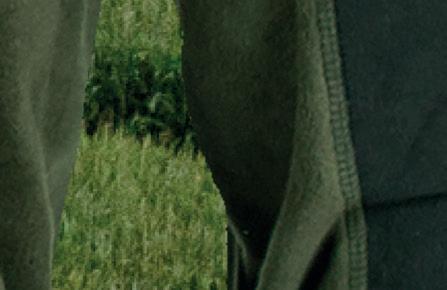






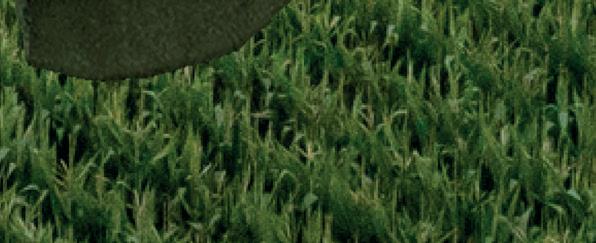
















































South Taranaki farmer Trish Rankin is a woman on a mission and recently held waste minimisation workshops for farmers in Canterbury.
] by Kent Caddick
The workshops which were about getting farmers to think about their purchasing decisions with waste reduction in mind were held in Ellesmere, Waimakariri, and Geraldine last month.
In 2017, Trish and her husband Glen were sharemilking in Taranaki when they started noticing they had a skip bin of waste collected every month.
“I started to think, how do we have this much rubbish on the farm, and it’s all going to landfill, there must be another option.”
In 2019, through the Kellogg Leadership Programme, Rankin began researching waste minimisation on farms and how a circular economy model could be developed in New Zealand.
She found growing requirements for manufacturers of on-farm products to be a part of a recovery scheme.
“The missing link was that many farmers still didn’t know what they could recycle and how, because it hadn’t been well communicated.”
Rankin said the great thing about the workshops is people can share solutions.
“It’s not me telling people what to do, someone might have a solution for tractor batteries and someone else might know more about recycling bale wrap. That way we can learn from each other.”
She said many farmers were unaware they were already paying a product recovery levy.
“Let’s just say I buy a $1000 drum of alkaline, $75 of that might be a levy to get that collected, but you don’t know you’ve paid that and instead you’re paying more money to get it collected in your skip bin,” she said.
“We [farmers] seem to get judged for our environmental footprint in everything we do. Every farmer I know is trying to do better, but it takes time, money and education.”
She said the focus of the workshops was about getting farmers to think about their purchasing decisions.
Instead of opting for products that could be wasted after a single use, Rankins is encouraging farmers to choose sustainable products with Agrecovery stickers signalling they’re part of a recycling scheme.


Rankin said her biggest hope is that after finishing a workshop, people would leave with the confidence to make one decision a month towards minimising and managing waste.
“The ‘should be’ list can be very long in farming. You ‘should be’ doing better for your animals, for your people, for your climate. Sharing knowledge and experiences farmer-tofarmer, and breaking it down, is empowering.”

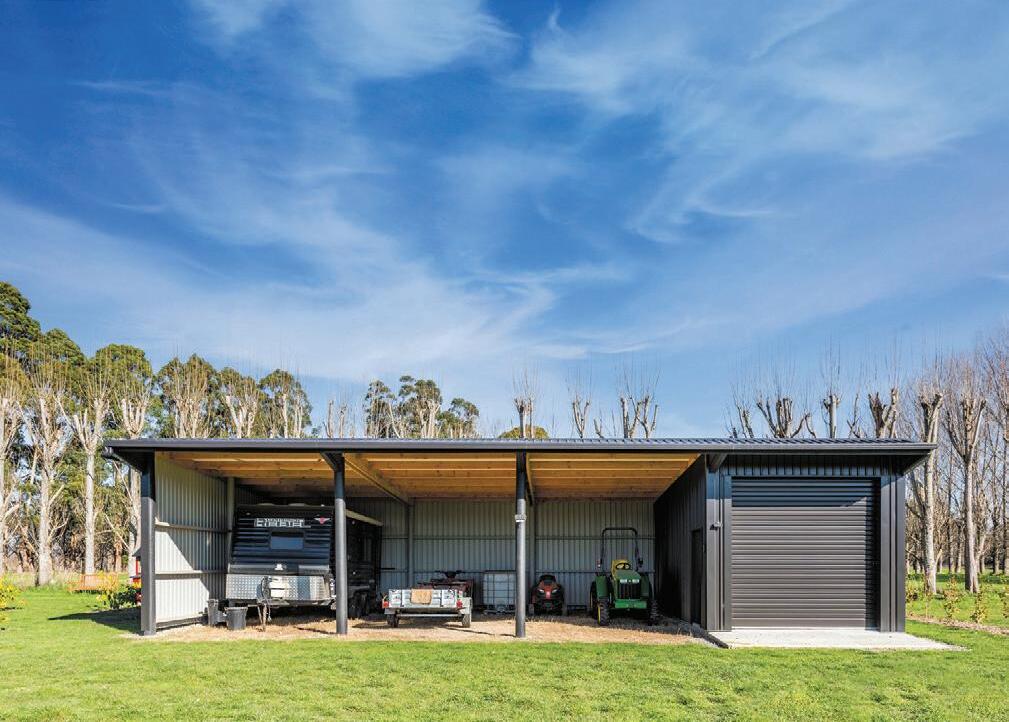


















] by Dr Deon Swiggs
] Deputy Chair,
We stand at a critical juncture for local government in New Zealand. Significant resource management, water, housing and infrastructure reform is coming our way, and with the change in national direction, it has never been clearer that we need comprehensive local government reform, now.
central government proposals, we will shape them, ensuring Canterbury’s voice is heard at the highest levels.
A proactive approach is crucial, and I am proud of the work we have done as a Council to develop positions that support proactive strategic work and advocacy opportunities.
] Canterbury Regional Council
We know this is a politically challenging path for central government, one they are currently reluctant to tread. In this absence, we cannot afford to wait. We must act.
My hope is that the work we are doing at Canterbury Regional Council will allow us to shift from a reactive stance, to one of proactive influence. We will not simply respond to
In uncertain times, clarity is paramount, and we have done the work as a Council to develop some shared positions on a range of issues including managing environmental effects; managing natural resource use; economic prosperity; structure of local, regional and central government; and Treaty partnership.
These positions provide a coherent basis for our message to central government, mana whenua, stakeholders, and our communities.
Canterbury is unique and we need a locally informed approach. We have about 70% of New Zealand’s groundwater, as well as braided rivers, diverse ecosystems, and productive farmlands.
Our Council champions the region and pro-
vides a regional lens to central government, ensuring national standards are complemented by our specific needs and knowledge.
We understand our region and the importance of fostering ecological coherence, integrated catchment-based thinking and a ki uta ki tai approach. We are committed to ensuring that our significant freshwater resources and highly productive farmlands are managed with the nuance they require.
Our region is a powerhouse for national economic prosperity. At Canterbury Regional Council we are committed to fostering that prosperity, valuing what we have – including our food producing ability – while embracing innovation and ensuring our infrastructure is resilient against the impacts of climate change.
We recognise our region’s contribution to the country’s long-term economic prosperity and the need for active environmental management alongside openness to innovation.
Importantly, we are united as a Council and want to reaffirm our deep and maturing partnership with Ngai Tahu based on mutu-
al respect, shared understanding and shared values. This is not just a statutory obligation; it is a shared vision, and a relationship that underpins all our work.
We want to tackle the elephant in the room: the unsustainable structure and funding of local government.
Even if central government is hesitant, we must continue to advocate for the regulatory clarity, better alignment, and diversified funding tools that our communities desperately need.
The current structure and funding of local government service delivery is unsustainable, and we are calling for New Zealand’s systems of government to adjust and respond accordingly.
The reforms are happening now and the implications that come with them are significant, not just for our role and function as a regional government, but for our region.
We will not stand idle and have change done to us. We are taking every opportunity to champion and advocate for Waitaha Canterbury.





A celebration of Marlborough in full spring bloom, Garden Marlborough is New Zealand’s premier garden event, taking place from 6-9 November 2025.
Now in its 31st year, the festival is a muchloved fixture on the national calendar, brought to life by a passionate community and a dedicated team of volunteers.
At the heart of the event are the guided garden tours, offering rare access to some of Marlborough’s most inspiring private gardens. From the region’s dramatic eastern coastline to its hidden valleys, rolling countryside and urban sanctuaries, each garden is chosen for its creativity, beauty, and the passion behind it. With full-day and half-day options, there’s something for every garden lover.
This year’s programme features international garden star Jamie Durie as keynote speaker. An award-winning designer and television host, Jamie will share his garden design philosophy and speak about his latest project, featured on the hit series Growing Home — a remarkable residence with 14 private gardens over seven levels, showcasing seamless indoor-outdoor living.
We’re also thrilled to welcome the evercreative Fiona Hugues, recently named one of the Top 50 Women in Food and Drink 2024. Fiona will host a vibrant session on Stylish Entertaining Without Freaking Out and a Holidayscapes table-styling workshop.
The festival’s workshop programme offers something for everyone, from bonsai, ceramics and flax weaving, to landscape photography, soil health and sustainable gardening. For something truly special, explore Marlborough’s flower farms, or cruise the Marlborough Sounds by boat for an unforgettable scenic experience.
To round off the weekend, don’t miss the ever-popular STIHL Shop Garden Fête, one of Marlborough’s largest free community events. With stalls showcasing rare plants, artisan goods, tools and garden products, it’s the perfect way to celebrate the season in style.
Book your tickets now at gardenmarlborough.co.nz







Off season break: The STIHl Shop Garden Fête, one of Marlborough’s largest free community events, and a popular feature of Garden Marlborough with stalls showcasing rare plants, artisan goods, tools and garden products,





























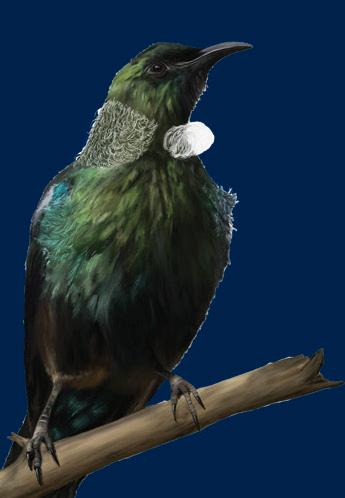



















































Councils have a mountain to climb to win back the trust of rural ratepayers according to Federated Farmers.
The Feds say that that starts with cutting wasteful spending and sharing the burden more fairly.




Feds local government spokesperson Sandra Faulkner said with council elections looming, now’s a great chance to ask some tough questions of councillors seeking re-election, and those challenging them for seats, on how they’ll lessen the rural rates burden.
“Council rates hikes have climbed well above inflation for several decades, but the pressure on ratepayers has only worsened,” Faulkner said.
“When elections happen this October, voters should back candidates who commit to capping general rate increases at inflation – unless there’s a genuinely extraordinary reason not to.” Faulkner said rural ratepayers are fed up with footing the bill for urban-centric services they don’t use and aren’t connected to.
“It’s time to scrap unfair rating differentials and shift towards targeted uniform charges and annual general charges to reduce reliance on property value-based rates.”
Federated Farmers is also calling for legislation changes that would require binding referenda on any council commercial projects that cost more than $500 per rateable property.

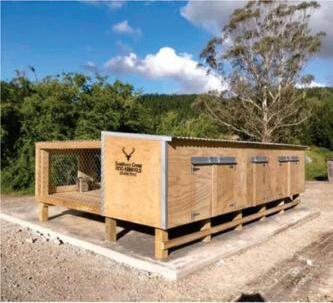





Not connected: Federated Farmers local government spokesperson Sandra Faulkner says rural ratepayers are fed up with footing the bill for urban-centric services they don’t use and aren’t connected to.
“We’re not talking about sewage treatment plants, bridges or other such essential infrastructure,” Faulkner said.
“We’re meaning commercial ventures like stadiums, conference centres and marinas that are beyond core council purposes and can destroy balance sheets.
“It’s not to say these projects can’t happen, but ratepayers should get to make the final call.”
She said councils could also save
money by sticking to their lane and leaving climate policy to central government.
“Councils should stop duplicating effort, and wasting ratepayer dollars, by setting climate policies.
“To do something positive for the environment, councils that haven’t already should bring in a rates remission policy for land under QEII covenants, Significant Natural Areas and Outstanding Natural Landscapes.
“Given that public conservation values are protected by these mechanisms, farmers deserve rates relief.”
Federated Farmers believes road users, rather than property owners, should be paying for local roads and bridges, as is the case for State Highways.
“We’re calling for 90% of local roading maintenance and renewal costs to come from fuel excise tax and road user charges, rather than rates. Currently, the average is only 53%.
“Property value rates are a particularly poor mechanism to fund roads for the same reason as general taxation, it doesn’t tie those who use roads with those who pay for roads.
“This system also lacks logic. In areas with a lot of tourism or freight, for example, locals are left paying for roading networks that serve a wider regional or national purpose.”




Are you looking for a beautiful cottage you don’t have to wait for?
David Wraight Cottages
] Advertorial supplied by ]
David Wraight cottages have for sale a model DW17B which is fully built, packed with charm, and priced at just $302,000 ex yard. This is the last home available at this price.
Boasting three bedrooms and two bathrooms, the cottage has a flexible layout for families, guests, or your own personal retreat.
A highlight of the design is the generous kitchen with a built-in window seat. Imagine morning sun and coffee in this fabulous space.
There are curtains and blinds already installed in the living areas, which the David Wraight team feel provides a cosy touch.
The clever laundry nook makes everyday living easy and is just another example of the 106sqm of well-designed space with character finishes throughout.
This home is sitting here ready, so there are no delays, no decision fatigue, just a stunning new home at a price we won’t be able to offer again.
For full specifications or a site estimate, just get in touch.
Phone us on 027 519 8282 or email davidwraightcottages@xtra.co.nz.








Bupa Ashford, Prebbleton Villas and serviced apartments
Call 03 928 5954 for more information.

Bupa Parklands, Papanui
Apartments
Call 03 930 6423 for more information.

Bupa Ballarat, Rangiora Villas
Call 03 974 4262 for more information.

Bupa Cashmere View, Spreydon Villas and apartments
Call 03 930 6403 for more information.

Bupa Parkstone, Ilam
Apartments
Call 03 928 5563 for more information.
•
Summerset Prebbleton is a modern, semi-rural retirement village offering a secure, low-maintenance lifestyle in a vibrant and growing community.
] Advertorial supplied by
With more than 126 residents already calling Summerset Prebbleton home, there’s a genuine sense of belonging and connection.
Whether it’s joining in a group activity, enjoying a casual chat over coffee, or simply appreciating the quiet surroundings, life here is as social or relaxed as you choose.
Summerset Prebbleton residents Ann and Brian say everyone here gets on really well.
“At our time of life, you want to relax, enjoy yourself, not worry about things.”
Development of the Summerset Prebbleton village centre is well underway. Once complete, it will feature fantastic indoor and outdoor facilities including a bar, pool table, hair salon, indoor pool and spa, cinema and café. This will become the social heart of the village hosting everything from concerts and community celebrations to casual get-togethers.
The village centre will also be home to our serviced apartments, care centre, and memory care centre, providing a full continuum of care should you ever need it.
“There’s a real buzz at our Prebbleton village. The village centre is the biggest milestone in a developing village, and seeing it take shape is exciting for everyone,” Grace Hickland, Sales Manager for Summerset Prebbleton said.


“To be creating such a beautiful facility that our residents can truly see as an extension of their home is something we’re incredibly proud of.”
A range of modern, independent homes are available now, ready for you to move in
and make your own. Each home includes generous bedrooms, a bright open-plan living space, and an internal access single garage.
With the village centre under development, now is the time to join the community
and
Want to learn more? Get in touch with Sales Manager Grace Hickland today on 03 353 6312 or visit summerset.co.nz/prebbleton










Amberley Country Estate, just 35 minutes from Christchurch, is uniquely designed with rural people in mind. Like a residential subdivision in look and feel, here you ’ll find spacious yards with individually landscaped gardens, wide roads and well spread out, luxurious, generously -sized, north-facing Villas, plus social gatherings, group events, fun classes and regular outings, complimented by our 350m2 Residents’ Clubhouse. A larger 1,350m2 resort-style community centre will soon be under construction and modern medical and care facilities are coming too. If you seek an active lifestyle with laid -back country living, call today to find out more about a retirement village with space to live a life you ’ll love. Visit our website today, come for a drive through the village or phone us toll free 0800 573 573.

2 Bedroom Villas available for immediate occupancy from $619,000

Low weekly fees


2 & 3 bedroom villas from 94 -185m2
Single and Double Garages available 350m2 Residents Clubhouse now open Full Medical and Care Facilities planned


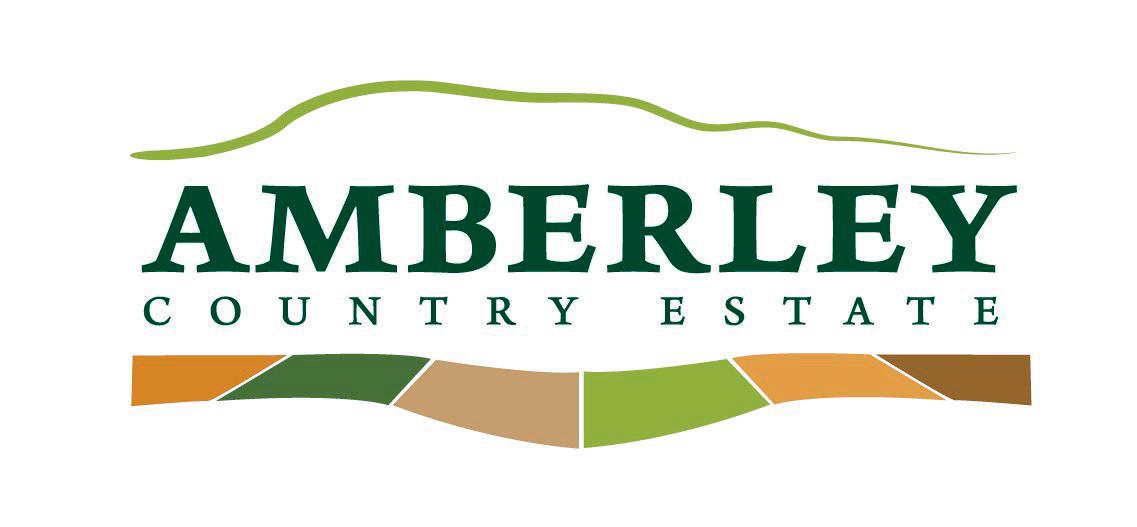
Space to live a life you’ll love
Matt Collier of Probiotic Revolution
advocates the use of their probiotic, Calf Xtreme, alongside higher milk feeding rates.
“This approach inevitably results in milk spilling into the rumen, but there the components of Calf Xtreme helps prevents nutritional and disease scours, and boosts digestion and intake of meal, hay, and grass.
The result is faster growth, with a survey showing calves reaching target weaning weights 11 days earlier,” he explains.
Matt cites an example of a Stratford farmer who used Calf Xtreme to change from feeding two litres twice a day to 7 to 8 litres once a day by day 10.
“Calves can’t normally get to this level of milk without getting scours but with higher milk intake research shows better tissue is being laid down in the udder in the first 5 weeks of a calf’s life.
“They are also growing better after weaning off milk. Heifer milk production compared with mixed age cow production has lifted from 74% to 86%. That’s a lift of 50 kg milk solids per heifer.
“With large calf rearing operations overcoming disease challenges is also critical and by increasing the dose of Calf Xtreme we can generally maintain a high milk rate to assist a speedy recovery”.
Kapuka dairy farmers Brooke and Blair McKenzie rear 800 calves each spring. Last year they had only two unexplained deaths after they left their rearing shed. Their calves still have some Rotavirus challenges every year in-spite of vaccinating cows, but they

lift the Calf Xtreme dose three or fourfold.
Brooke emphasizes the importance of nutrition in these results:
“Following Matt’s advice, we now feed 7 to 8 litres of milk once a day by day 10, instead of 3 litres twice daily. We had them growing at 1kg liveweight gain from calving to Christmas.
Hay consumption increased, and with
faster growth and improved immunity, our calves better handle rotavirus,” the McKenzies said.
Matt says “Probiotic Revolution is committed to promoting the use of Calf Xtreme with high milk rates to raise heifer milk production. It the accelerated growth we get at a very young age that is a key to achieving this.”


‘Calves reach weaning weights 11 days earlier with Calf Xtreme.
Matt Collier Probiotic Revolution




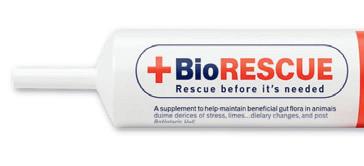






New Zealand’s red meat sector continued its strong performance with overall exports worth $1.21 billion in April, a 34 per cent increase year-on-year with growth in almost all major markets.
The USA was the largest market for the month with exports worth $344 million, up 39% from last April. This was followed by China at $253 million, up 9%, the UK at $81 million, up 56%, the Netherlands with exports of $60 million, up 96%, and Germany at $54 million, up 160%.
Sirma Karapeeva, chief executive of the Meat Industry Association (MIA), said the latest export figures reflected the continued strong demand for red meat globally.
“This was slightly down from the record exports in March but still significantly higher than last April,” Karapeeva said.
“This is great news for the New Zealand economy, especially for those rural and regional communities across the country that rely on the meat processing and exporting sector.”
“For sheepmeat, we’re seeing a continuing recovery in exports to China and strong demand in the EU, which achieved a record value for the region for a single month.”
Karapeeva said while the volume of beef exports to the USA was 5,000 tonnes lower than in March, that was more likely due to normal monthly fluctuations than the impact of the 10% tariff.
“We’re still determining the full impact of the decision to impose a tariff on exports to the US.”
The only major market where there was a decline in exports compared to last April was Japan, down four per cent to $50 million, which was due to a drop in beef and beef offal exports.
Overall sheepmeat exports in April were 41,843 tonnes worth $517 million, an increase of 13% by volume and 51% by value compared to last April.
The volume of sheepmeat exports to China increased by 6% to 17,461 tonnes and the value was up 34% to $122 million. There was an even larger increase to the EU, with the volume up 53% to 8,689 tonnes and the value up 93% to $167 million.
The one major market where there was a small drop in sheepmeat volume was the UK, where exports were down 3% to 4,589 tonnes, however, the value of exports to the UK was up 51% to $64 million.
The volume of overall beef exports was down three per cent from last April to 42,421 tonnes, but the value was up 21% to $473 million, largely due to strong demand in North America.
The US was once again the largest market for the month with exports of 18,107 tonnes worth $228 million. This was a 10% increase by volume and 38% increase by value compared to last April.
Beef exports to China were down again 31% by volume to 9,763 tonnes and 27% by

Strong performance: Red meat exports continue to perform well with growth in almost all major markets in April.
value to $71 million, but exports to Canada were up 40% by volume to 2,865 tonnes and 77% by value to $33 million. There was a 26% drop in the volume of ex-
ports to Japan, down to 2,832 tonnes, but with the demand in North America generally keeping prices up, the value of exports to Japan only dropped 5% to $34 million.

To set a dairy cow up for a long, productive life you must give her the best possible start. Extra effort now will pay dividends throughout her milking life.
Heifers that reach target weights make successful milking cows and growing them well starts from the day they are born. Calf rearing good practice
All calves, including bobbies, must receive adequate fresh colostrum within the first 24 hours of life and should be fed colostrum, or a colostrum substitute, for at least the first four days of life.
• Always handle calves gently and with care. Do not allow anyone to throw, hit or drag a calf at any time. Electric prodders must not be used on calves.
• Calves that are not with their mothers must be provided with shelter so that they can stay warm and dry.
• Calf pens must be fit for purpose and well maintained. Bedding areas must be comfortable, clean and dry, with adequate ventilation but draft free at the calf level. Exposed concrete, bare earth and mud are not acceptable.
• Calves should be fed at the same times each day to minimise stress.
• Always ensure your calves have access to plenty of fresh water.
• Feed calves adequate quantities of good quality feed to rapidly achieve weaning weight with a well-developed rumen.
The calf should drink at least two litres of fresh colostrum during the first six hours of life to get protective antibodies. To achieve this, pick up calves twice a day and give them gold colostrum Gold colostrum is valuable even if it has blood or with clotty mastitis milk. It is best fed fresh but may be frozen for up to six months. Thaw/heat in warm water; do not microwave.
You can test the level of antibodies in a batch of colostrum using a Brix refractometer, available from your vet, farm supply store or a home brew shop. Brix higher than 22% are best for newborns.
Store colostrum in multiple drums (to reduce risk of loss), in a cool place and out of direct sunlight. Stir twice a day.
A colostrum keeper or yoghurt starter, available from supermarkets, can be added to each drum to preserve it. Alternatively, preserve colostrum with potassium sorbate.
Best start: Giving calves the best start in life will pay dividends later.
Ensure good routine hygiene and health practices
• Scrub all feeding equipment well with hot water and detergent
• Remove sick calves promptly to a designated sick pen
• Frequently clean and disinfect pens where sick calves are treated
• Disinfect hard surfaces
• Ensure bedding is regularly refreshed
• Control the spread of disease by minimising movement between pens. Calves of the same age should stay in the same pen. However, small or unthrifty calves may be better off with a healthy younger group.
• Vaccinate, treat for parasites and provide access to shelter Diseases that people can contract from handling dairy animals in New Zealand include Leptospirosis, Cryptosporidiosis, Campylobacter, Salmonellosis and Ringworm.
To keep both humans and animals healthy, it is important to maintain high cleanliness and hygiene standards and vaccinate your herd where possible after discussing with your veterinarian.
Make regular health checks
Calves must be checked twice daily for signs of ill-health and treatment given when needed.
Check that:
• Noses are clear of discharge and are moist and cool
• Calves are alert and have responsive ears with no infection around the ear tag
• Navels are clear of infection
• Mouths are clear of ulcers
• Calves can stand and walk normally i.e. no joint ill
• All calves are feeding
• Calves have shiny, supple coats.
• If you lightly pinch a calf’s skin and it is slow to return to normal it may be dehydrated and need electrolytes immediately.




Beef + Lamb New Zealand in partnership with the Ministry for Primary Industries and other sector organisations, has launched a national survey to understand better the impact of facial eczema on farmers.
] by Kent Caddick
The Social Impacts Survey is part of the broader Eliminating Facial Eczema Impacts (EFEI) programme, an industry-wide effort to reduce and ultimately eliminate the devastating impacts of FE on New Zealand’s livestock industries.
The survey seeks input from sheep, beef, dairy, deer, and camelid (alpaca and llama) farmers. There is also a separate survey for rural professionals like veterinarians and farm advisors.
Dr Suzi Keeling, Head of Science and Research at B+LNZ, said the social impacts survey forms part of the programme’s journey to understand FE and its effects on farmers.
She said other projects contributing to the understanding of these impacts include the Sheep Poo Study, which is entering its third and final season.
“This study plays a key role in assessing the spread and severity of FE. Earlier this year, an economic survey illuminated the financial impacts of FE, and this social survey is equally crucial.”
Keeling said FE affects more than profit and on-farm productivity.
“It impacts farmers’ sense of purpose, self-worth, and relationships with their animals and families. The human side of the story has been underreported.
“Facial eczema is a challenging disease to identify early and manage. It affects the animals but also impacts their caretakers, leading to broader consequences for the entire farm business and other relationships.
“We know farmers are deeply connected to their animals; when animals suffer, it can take a real emotional toll.
“Participants will help us get a better understanding of the effects on individual farms and support practical support tools, and onfarm strategies to reduce the burden of FE,” Keeling said.
The 15-minute survey is open until Friday, 18 July, and can be found at surveys.cinta.co.nz/wix/ p483346700410.aspx. Or if farmers prefer to complete the survey over the phone, there is an option at the start of the survey to leave their details, and they will be given a call. All responses are anonymous and confidential. For every completed response, B+LNZ will donate $10 to a charity supporting rural wellbeing.












With another calf rearing season just around the corner, now is a great time to plan for a very busy time on the farm.
] Article supplied by Vetpak
Developing a rearing strategy ahead of time with staff for issues like hygiene in calf pens, calf scour treatments will allow the team to act more quickly and effectively if any of these issues arise, this can lead to much better health outcomes for the calves.
Some options to consider for a good calf rearing/health strategy may include products like Rotagen Combo and Vetsan Super Concentrate.
Rotagen Combo, the natural product for preventing and treating calf scours, is a very good option for protecting valuable replacement heifer calves. Farmers are always looking for solutions to protect those valuable replacement heifer calves without the high costs,
Rotagen Combo is a dried egg yolk product made from eggs laid from hens that have been vaccinated with Rotavirus 6 and 10 virus antigens. The hyper immune status that these hens achieve ensures very high levels of antibodies end up in the yolk of the eggs. New Zealand is the only country in the world where specific antibodies against specific pathogens (Rotagen “Combo”) are a registered animal remedy.
The main cause of neonatal calf scours is Rotavirus which is a disease caused by a virus, which calves pick up from carrier cows very soon after calving. So it is a disease of very young calves (often as young as 1 to 4 days of age) but older calves are still vulnerable until at least one month of age. Other pathogens can be involved, but Rotavirus infection is always present in at least 80% of outbreaks.
The disease is characterized by severe diarrhoea which has a distinctive smell, dehydration, and a death rate of 20% or more without treatment. Unprotected calves can

result in an infection rate of 80% or more in severe outbreaks.
The cost of treating scouring calves and the deaths are the obvious costs of an outbreak, but the hidden costs are probably even more important, because these affected calves receive severe setbacks at a young age and there is damage to the intestinal lining, growth rates can be reduced, and this may have an effect on their lifetime production.
A simple programme of treating calves at birth with a drench of Rotagen Combo once a day for five days will prevent clinical cases of Rotavirus.
Like any prevention programme, the key to

Plan ahead: The main cause of neonatal calf scours is Rotavirus which is a disease caused by a virus, which calves pick up from carrier cows very soon after calving.
a successful regime is treating all the heifer replacement calves or any others being kept, non – replacement calves that are not going to be kept need to be kept separate and located well away from your treated calves so there is no chance of cross-contamination. Rotagen Combo works by coating the virus particle with antibodies which render it inactive. It doesn’t kill the virus but prevents it from causing any damage to the intestinal lining.
If the calf is later exposed to Rotavirus because of a breakdown in the control of environmental contamination, Rotagen Combo treated calves may still get Rotavirus and will need to be treated again.
The other important aspect of infectious scours control is an effective hygiene strategy to reduce environmental contamination. Vetsan Super Concentrate is effective against Rotavirus 6 & 10, Crypto, E Coli, Salmonella and Corona should be used to spray out the calf sheds before the season begins, then continued to be used regularly throughout the season to reduce those environmental challenges.
For more information on Rotagen Combo and Vetsan Super Concentrate please check the website www. vetpak.co.nz or talk to your local veterinarian.
For prevention and treatment of calf scours caused by Rotavirus 6 &10, Crypto. Rotagen Combo is anti-biotic FREE and GMO FREE.
Enerlect is a high energy source electrolyte that also supplies all the important electrolytes lost during diarrhoea casued by infectious agents or due to a nutritional imbalance.
Virucide, biocide and deodoriser for all surfaces on farm including farm sheds and animal housing such as calf pens. Vetsan is active against all the important pathenogenic micro-organisms that can cause calf scours including Rotavirus, Cryptosporidia, Salmonella, E coli, Coronovirus. Also effective against Mycoplasma Bovis.
Enerlect and Rotagen Combo are registered pursuant to the ACVM Act 1997, Enerlect A9276, Rotagen Combo A9928

Beef + Lamb New Zealand has released updated independent research showing whole sheep and beef farm sales for conversion to forestry, particularly carbon farming, continue at what they say is an alarming rate.
The research by Orme & Associates shows a further 38,921 hectares has been confirmed as sold since the last report in September 2024.
Revised confirmed sales in 2023 now total 29,518 hectares and in 2024 now 30,483 hectares, and that figure is expected to rise as further sales are confirmed.
Sales through Overseas Investment Office approvals and to carbon-only forestry entities continue to dominate.
The total amount of whole sheep and beef farms sold since 1 January 2017 is now more than 300,000 hectares.
B+LNZ Chair Kate Acland said B+LNZ’s conservative estimate is that more than two million stock units have been lost to afforestation since 2017.
She said the figures reinforce the need for action.
“While we appreciate the Government’s announcement about legislation being introduced to restrict wholesale conversions based on land use classes, the numbers show whole-farm sales for conversion to forestry for carbon credits are continuing at pace,” Acland said.
“Anecdotally we’re still hearing of a significant number of farms being sold this year, despite the Government announcing the limits last year. “
“We’re concerned that some sales are continuing on the basis of intent to purchase land before the limits were announced. We urgently need the Government
to tighten the criteria around proof of intent to purchase.
“More broadly we have questions about whether the limits announced last year will go far enough and slow down this land-use change significantly.
“In particular Land Class 6 is the foundation of our breeding farms and 15,000 hectares every year coming out of this will add up over time.
“Our sector wants to be able to get on and further grow exports, not spend time worrying about this issue.”
She said of particular concern is a significant shift in the type of land being sold and the Orme research highlights the trend of land traditionally well-suited for pastoral farming being increasingly purchased for conversion.
“Across a range of measures Orme & Associates looked at, it’s clear that more and more trees are going onto productive sheep and beef farmland.
“B+LNZ is not anti-forestry. In particular, we strongly support the integration of trees within farms, which we believe is a better approach.
“Farmers know their land and can plant the right trees in the right places, without affecting overall levels of production.
“Instead, we’re seeing blanket pines replacing sustainable food production.
“We’re also hearing significant concerns from neighbouring farmers about the impacts of a lack of pest and fire risk management around recently converted areas of land.”















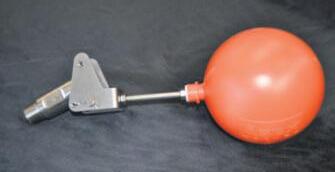

















Over the last month export log prices have remained stable but at lower levels than preferred. This continuance of same old is good news in the context of prices in the market have stopped falling.
with Allan laurie MNZIF
Laurie Forestry Ltd
Across the mix of supply and demand there are signs both India and China have bottomed out and now showing signs of recovery with talk of lifts in selling prices for August settlements.
Importantly, this time of year is a time of normal cyclical lows. By comparison the export market price indicator A grade, is at the highest is has been compared to the last 4 years.
This then suggests there are likely to be better times ahead, ignoring of course the many current abnormal world factors that might impact the softwood fibre supply chain. An unhinged Donald Trump being of course one of them.
There are some exciting things happening in the market as well as some useful statistics emerging about forests on the planet and just how well poised New Zealand is to capture the upside.
New Zealand is on the cusp of a Free Trade Agreement with India. This would have two net impacts. Firstly, the dropping of the current tariff would add US$6-$7 per m3 to the value of our Radiata pine logs.
Secondly, a current supply source from Uruguay would not compete with New Zealand logs without tarriffs, immediately adding


two additional shipments per month of sales to this rapidly growing trade destination.
Canada’s harvest, predominantly Lodgepole pine has shrunk from 90mil m3 pa to 35 mil in five years because of bark beetle infestation. Many sawmilling companies are relocating to the Pacific Northwest, harvesting and producing for the US market. This has seen PNW log exports to China slow to a trickle.
European Spruce exports to China have slowed to less than 100,000 m3 of logs per month from 600,000m3. Commentary suggests even the current volumes will eventually cease as Germany primarily, runs out of forest to harvest due to the same bark beetle that is eating its way through Canada forests. Spain, including the Basque Country has lost in excess of 50,000 hectares of their softwood forest since 2018 due to pathogens, primarily Lecanosticata acicola. This pathogen poses a very real threat to New Zealand softwood forests, with our biosecurity settings undergoing a major review as a consequence.
China has faced major challenges but is emerging as a much stronger economy than some of its critics have suggested. Indeed, China has just reported a Q1 trade surplus of $US165bil. Compare this with the US trade deficit Q1 – $US425.5bil. Sorry Donald, it isn’t working.
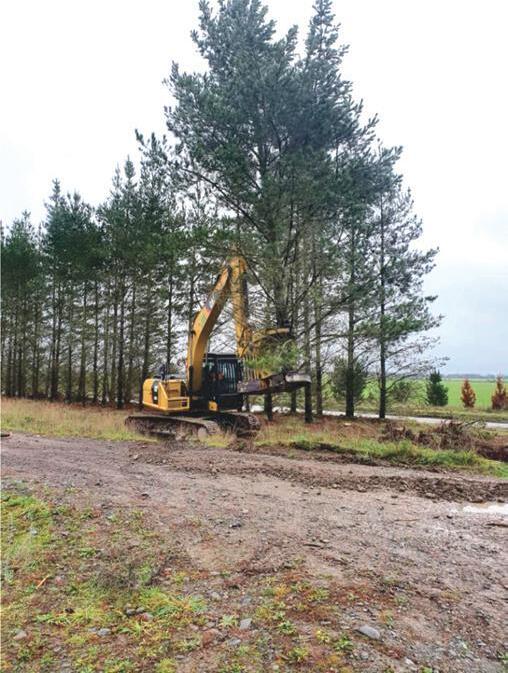
‘
New Zealand sits in a highly favourable position with fast growing, healthy softwood forest that comprise highly regarded wood fibre.
China has been consistently using about 60,000 m3 per day of our wonderful Radiata pine logs when things were supposed to be dire. This then tells us there is a very real every day usage requirement with its foundation being the China middle class population.
This in turn tells me China needs New Zealand to harvest about 100 hectares of our forests every day just to satisfy ongoing usage. This is an extraordinary story of two trading partners needing to continue to work collaboratively.
India log trade expansion is limited by infrastructure, with one only port currently receiving break bulk logs (Kandla). The Logs
in container trade is growing quickly. We are currently supplying enough logs to fill about 10 x 40ft containers per week, the current demand is for 100 per week.
Vietnam has become a significant importer of New Zealand logs in containers. This mostly relates China companies manufacturing in Vietnam to dodge tariffs. But Vietnam has also become one of the strongest economies in the world with ample demand from consumers and producers for export. We (LFL) are currently supplying up to 6 containers per week to Vietnam, their demand is also in excess of 100 per week.
And to conclude with the most disturbing information recently published by Global Forest Watch suggesting 6.7mil hectares of Tropical primary forest were lost on the planet to YE 2024 due to fires, pests and land use change.
It is becoming abundantly clear New Zealand sits in a highly favourable position with fast growing, healthy softwood forest that comprise wood fibre that is becoming more highly regarded by an increasing number of countries.
As always, please remember the thoroughly important message, “despite the challenges, it remains, as always, fundamentally important, the only way forward for climate, country and the planet, is to get out there and plant more trees”.














In last month’s article the possible, even likely, retirement of the local superphosphate manufacturing operations was mentioned.
When first established being sited in harbours made perfect sense. Large ships could unload direct into sheds without the requirement for trucks. Unloading was fast, efficient, and low cost.
Large amounts of sulphuric acid are required to make the phosphorus in hard-rock water soluble. There is always the potential for the contamination of surrounding land and water, a factor those opposing the renewal of resource consents will highlight.
These concerns have greater validity now that the positive impact of large applications of immediately available phosphorus to pasture no longer exists.
The development phase of nearly all grazed land is over with maintenance-only input now required.
Dr Tim Jenkins wrote in the article The big “P”, that the true maintenance in a typical sheep and beef operation may be around 4 to 8kg P/ha, and in dairying 10 to 16kg P/ ha.
That was published in 2007 and since then most farmers have applied at least double that amount annually. There is now often as much as 1000kgP/ha held in the top 15cm measured by the Total Phosphorus test with only around 5% plant available at any time.
When P is applied in the water-soluble form it only stays in that form for a short period. It rapidly combines with iron, manganese, and other elements with the speed at which it is released for plant uptake dependent on beneficial soil biology.
Beneficial soil biology is ever present and performs best where there is 25% air and the same amount of moisture. Higher than normal calcium levels also stimulate activity, particularly that of earthworms.
Regardless of the form in which nutrient is applied, it is biology that ultimately determines the speed and sustainability of growth.
Calcium and a soil pH of around 6.3 is essential for the rapid cycling of all nutrient. Relatively small amounts of regularly applied nutrient is preferable to large amounts less frequently, as biology and plants perform best in a constant environment.
With all those aspects in mind CalciZest and DoloZest were developed by Functional Fertiliser twenty-five years ago.
Both products contain soft carbons inoculated with a wide range of selected ben-


eficial microbes. Bacillus ensure rapid digestion of old plant material with more rapid recovery of pasture after summer.
Trichoderma are well known for their disease resistant properties and are also includ-
Dirty work: Checking soil profile before adding nutrients is essential as it is biology that ultimately determines the speed and sustainability of growth.
ed as are mycorrhizal fungi for their nutrient and moisture harvesting activity.
DoloZest containing Golden Bay dolomite is typically applied in autumn to ensure calcium/magnesium related metabolic disorders in spring are minimized.



ཟ
ཟ
ཟ
ཟ




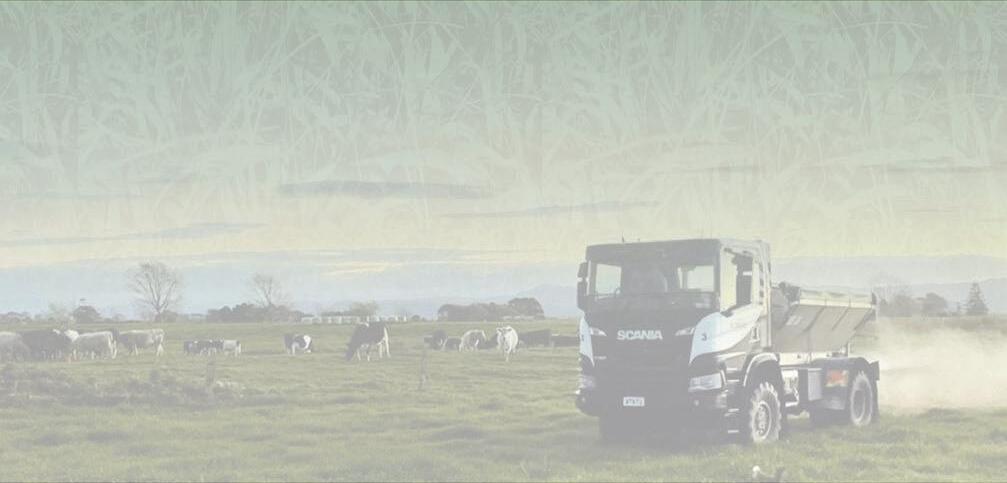




On properties where DoloZest is applied each autumn little magnesium supplement is required during early season, with the proviso that animals are fully fed on the pasture to which product has been applied.
Another often overlooked benefit is the increase in plant energy levels due to plants photosynthesizing more efficiently.
A handheld refractometer is an effective way of measuring soluble sugar levels in the paddock.
DoloZest can be applied at any time that is suitable for groundspread vehicles and a rapid response in animal performance can be expected.




An ongoing risk in the fight to eradicate the cattle disease Mycoplasma bovis has led to some new requirements for raw milk destined to be used as cattle feed.
Article supplied by
Disease eradication agency OSPRI is alerting farmers to new legal requirements which apply from July 1 to keep records of the movement of raw milk on and off farm.
OSPRI’s national manager, Mycoplasma bovis, Mackenzie Nicol, said it’s known that M. bovis can spread between properties when raw milk is used for cattle feed, so, from July 1, the new National Pest Management Plan for M.bovis requires anyone receiving raw milk on to a farm with the intention of feeding it to cattle, to accurately record it.
“Farmers and industry have worked so hard to eradicate M.bovis, what we are do-
ing with this requirement is all about closing one of the last loops, where we know there is risk of disease spread. It makes good sense to be vigilant,” Nicol said.
“We know this change will affect businesses transporting raw milk to be used for cattle feed, the farmers receiving it, and will rely on dairy processing operators offering up information about the milk they supply.
“Luckily most of this information is already recorded – so the requirement should fit with good farm biosecurity practices,” she said.
To help with the record-keeping, OSPRI has created a template form.
“When you use our form, you’ll be noting down all the information we need to collect,

like the date and time of delivery, where the raw milk came from, how it got to your farm and how much was delivered.
“It would also be worthwhile to make notes on sales invoices or receipts for raw milk purchases, the farm diary, or a driver’s logbook.
“We need to do the best we can to keep track of all the risks we know of when it comes to extremely tough diseases to fight, like M.bovis.”
Nicol said recording these movements could also play an important role in contain-





ing and limiting the spread of other infectious diseases such as foot-and-mouth disease or bovine viral diarrhoea.
The template form can be downloaded from www.ospri.co.nz
Electrical problems or maintenance?
Use our unrivalled industrial electrical service for:
• Dairy sheds and irrigation
• Power reticulation
• Effluent control
• Dryers, conveyors and generators
• Switchboards and central supplies
















































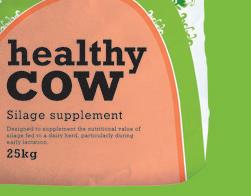













Leaders from across the livestock sector have come together with the Government to sign a new agreement on how to prepare and respond in the event of a foot and mouth disease outbreak.
] by Kent Caddick
DairyNZ, Beef + Lamb New Zealand, DairyNZ, Dairy Companies Association of New Zealand, Deer Industry New Zealand, NZPork, and the Meat Industry Association of New Zealand all signed the operational agreement alongside the Ministry for Primary Industries (MPI).
The agreement formalises how the seven partners will work together on Foot and Mouth Disease (FMD) readiness, and how to respond should the disease arrive here.
It sets out how the costs of FMD readiness and response activities will be shared between the Government and the livestock industry.
As part of the agreement the livestock sector partners will meet 40% of readiness costs, and 15% of response costs which are capped at $450 million over the term of the 11-year agreement.
The Crown’s reference exposure is $2.5 billion for responding to an FMD outbreak, but this could run higher in the unlikely event of more than one outbreak during the term of the agreement.
It also creates legally binding participation of industry in decision-making, ensuring that farmers’ interests, knowledge and input is heard.
DairyNZ chief executive and inaugural chair of the Foot and Mouth Disease Council Campbell Parker welcomed the signing.


“Biosecurity is a key priority for DairyNZ as it helps us to power more productive and resilient farms, with dairy farmers the biggest sector investors in the biosecurity system,” he said.
“Dealing with an outbreak of FMD would cost the livestock sector billions, and we want to be involved in deciding how those costs would be best spent.”



Beef + Lamb New Zealand chair Kate Acland said the wide sector support for this agreement was reflected in a clear ‘yes’ vote from sheep and beef farmers, following the high-profile voting campaign undertaken by Beef + Lamb New Zealand over April and May.
“We needed their formal approval to sign the agreement, and our farmers told us they
want to have a voice in decision-making about readiness and response activities and funding,” Acland said.
Dairy Companies Association of New Zealand executive director Kimberly Crewther said the signing is a major milestone after over a decade of engagement to establish the foundations for partnership in addressing this most significant biosecurity risk for the livestock sectors.
“Recent overseas FMD outbreaks, including in Europe, reinforce the importance of getting to this point and ensuring government and industries’ combined resources, knowledge, and capability can be deployed in the most efficient and effective way to reduce risk and impacts.”
Deer Industry New Zealand CEO Rhys Griffiths said the legally binding agreement gives the deer industry a seat at the table, which is vital for representing the voices of their farmers.
“Such representation is crucial, not just for the deer industry but for the wider primary industries and the channelling of farmer perspectives to government.”
Foot-and-mouth disease (FMD) is a highly-contagious viral disease which affects cloven hoofed (with two toes) animals including sheep, cattle, pigs, goats, llamas, alpacas and deer.
Information for this article was supplied by DairyNZ. For more go to: www.dairynz.co.nz



At FMG, we’re here to help dairy farmers stay informed and get ahead. That’s why along with offering useful advice and tips, we support dairy workshops and seminars happening right across the country. Because at the end of the day, learning the latest techniques and developing new skills will help you make positive changes and better decisions. So take the opportunity to stay ahead at a dairy event near you. Head to fmg.co.nz/dairyevents to find out more.
We’re here for the good of the country. SUPPORTING DAIRY
Global dairy commodity prices have continued to climb in most key exporting countries over recent months, but the second half of the year is expected to bring increased ‘downside’ risks, according to a new report by agribusiness banking specialist Rabobank.
] Article supplied by Rabobank
In its latest Q2 Dairy Quarterly Report, “Too Good To Be True?”, Rabobank says modest production growth in the first few months of 2025 has underpinned firm dairy commodity prices.
Report co-author, RaboResearch senior analyst Emma Higgins, said RaboResearch estimates that output from the Big-7 dairy exporting regions (New Zealand, Australia, the EU, Argentina, Uruguay, Brazil and the US) expanded by 0.5% year-on-year (YOY) in Q1, a modest increase that aligns with the recent price strength.
“However, the outlook is shifting. Production growth is projected at 1.1% in Q2 and 1.4% in Q3, marking the strongest quarterly increase since Q1 2021. Both the U.S. and EU are expected to contribute to this growth, with additional support from South America, granted against weak prior-year comparisons.”
On the dairy demand side, the report says, signs of stress are emerging.
“These stressors include near record-low consumer confidence in the United States, troubling indicators of economic struggles in China and declining sales data from restaurants and consumer packaged goods companies across many regions,” Higgins said.
Amid these dynamics, the report says, global trade conflicts remain elevated, with volatility and rapidly changing tariffs emerging weekly, factors that are influencing global dairy trade flows.
“Nevertheless, dairy product prices, particularly in Oceania, have surged to multi-year highs.”
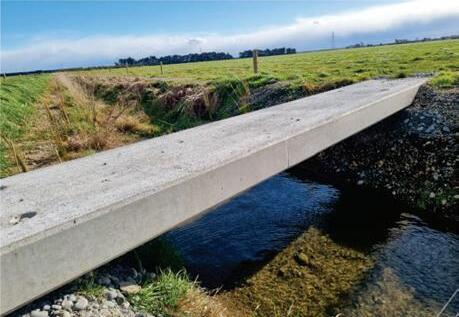








Forecast: RaboResearch senior analyst Emma Higgins is predicting a second consecutive season of double-digit payouts and sustained profitability for New Zealand dairy farmers but warns there are risks ahead.

Higgins said Fonterra’s opening milk price forecast of $10.00/kgMS for the 2025/26 season is the highest on record and positions farmers for a likely second consecutive season of double-digit payouts and sustained profitability.
“Dairy companies are acknowledging the uncertain macroeconomic backdrop to the 2025/26 season. Fonterra’s incredibly wide forecast range of $8.00 to $11.00 /kgMS highlights potential market volatility,” she said.
“While Fonterra’s opening farmgate milk price forecast is placed at $10.00/kgMS, higher than the midpoint of the range at $9.50/kgMS, some other dairy companies have provided an opening forecast lower than NZD 10.00/kgMS, flagging market volatility risks as a cause for concern this early in the season.
“Seasonal volatility that can occur over

the winter months and unwelcome commodity price shocks are a real consideration in the geopolitical climate we find ourselves in, where market-moving headlines are announced almost daily.
“RaboResearch has a view that $9.50/ kgMS to $10.00/kgMS is a sensible range to kick off the new production season. While there is room to see the farmgate milk price move higher than this range, it will require firm dairy markets over a sustained period and a weaker currency.”
The report says New Zealand dairy export volumes for the three months to April 2025 rose 5% year-on-year, driven by a weaker New Zealand dollar and stronger commodity prices.
“These factors contributed an additional $1.5 billion in export value over the same period,” Higgins said.
“Shipments to China surged by 10%, with
‘Farmer sentiment is elevated, especially in Canterbury.
Emma Higgins
RaboResearch senior analyst
increased demand also seen from Indonesia, Korea, and Sri Lanka.”
The report says New Zealand dairy farmer confidence remains high and dairy production for next season is expected to rise.
“Farmer sentiment is elevated, particularly in the South Island where land conversions to dairy are being discussed, especially in Canterbury and, to a lesser extent, Otago/ Southland.
“While the scale of new conversions remains uncertain, any resulting milk growth is likely to materialise from the 2026/27 season onward.
“For the 2025/26 season, we anticipate collections will increase by 2% year-onyear, approaching the record volumes of the 2020/21 season,” Higgins said.
“This assumes all production factors are favourable; especially settled weather and sustained high forecast milk prices.”














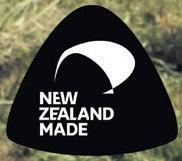
Water is as high on New Zealand’s agenda now as it has been for decades, and for good reason.

] by Stephen McNally
] Principal Technical Advisor
] IrrigationNZ
The Government sent a strong message at the Mystery Creek National Fieldays in June that water storage is a national priority and must be taken seriously.
That recognition is welcome, particularly given glaring facts: we have more frequent dry spells, shifting weather patterns and we have an exponential need to support food and fibre production amidst a growing global population.
Water storage is just one part of the equation though. As work gathers pace on Resource Management reforms, it’s a good reminder that strong and resilient communities will require a joined-up focus.
If we focus on just one component, we will
only get us so far. Our reality is that communities will strengthen not just with good infrastructure, they’ll strengthen through understanding and managing our water better too, both within local catchments and onfarm.
Without a connected approach, one grounded in good data, sound decision-making, and practical on-farm practices, we risk building infrastructure that isn’t fit for purpose. Because different communities have different needs and we have to lean in to understand localised issues, so we get good results nationwide.
That’s why we need to keep the conversation broad, moving from simply storing more water to also using the water we have, to our best ability.
And that means addressing water from all angles: on-farm, in orchards, and with every irrigator.
In the broader public conversation, we can’t ignore the questions raised about farming’s impact on waterways, landscapes, and communities.
A connected catchment approach is fundamental to how our farmers and their neighbours view their shared responsibilities and shapes the social fabric of the way we do things.
That’s how farming communities have always operated. Now, with increased transparency, which means recognising those external concerns, and addressing them.
Water storage projects, for example, must

be part of a wider framework that enhances environmental outcomes, supports biodiversity, and respects community values.
The good news is that it can be done –there are excellent examples both here and overseas where bipartisan support has been achieved. Well-designed water systems can deliver environmental, cultural, and social
benefits alongside economic ones – but only if they’re backed by data, trust, and shared understanding.
That’s the kind of balanced decision-making we’re advocating for through the Resource Management reform process – and the irrigation sector has a vital role to play in leading that approach.
BY LINDSAY
















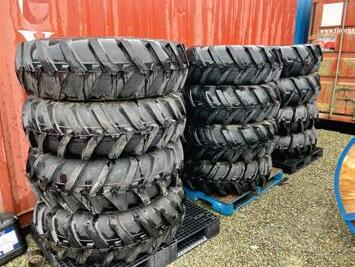






Resource consents are crucial to most farming operations. However, they are often left in the
It’s common for us to overlook the importance of regularly reviewing our consents. By neglecting to review them we increase the likelihood of non-compliance, we could miss an opportunity to ensure the consents are appropriate for what we want to do, as well as potentially missing other opportunities the consents may provide.
Reviews can identify where there may not be full compliance, allowing corrective action to be taken before regulators intervene. It’s important to understand that consents are not set in stone.
Some aspects of them can be altered to better reflect the needs of the farming operation. If changes are required, they can often be made without putting the consent at risk.
On many occasions consent holders have said that they are nervous about altering a consent as they feel that Environment Canterbury (ECan) will impose more restrictive conditions.
This is not typically the case and if you have sought advice from a reliable source, you will understand what is likely to happen and whether there are any risks involved.
Keeping track of expiry dates of consents is particularly important. Prior to consents expiring ECan write to the consent holder informing of the date of expiry. However, ECan are not obliged to do this and sometimes letters can go missing, either before or after delivery.
This means that you cannot rely on this process to alert you when your consent is expiring. Do you know when yours expires?
Why is knowing the expiry date im-

portant? It’s not just important, it’s vital. Replacement applications must be submitted to the council well before the expiry date. They need to be lodged at least 6 months prior to this date.
In over-allocated groundwater zones, if a replacement application for the take and use of water is not submitted more than three months before expiry, ECan will not be able to receipt the application. In other words, the consent cannot be renewed.
This obviously has huge consequences and so it’s vital that all consent holders track expiry dates. It’s recommended that you commence the renewal process by contacting your consultant at least 18 months prior to the expiry date of the consent.
Another key element to keep an eye on is that all conditions of the consent are being complied with. For water take consents this includes ensuring water meter data is being reliably collected and that the data is correct.
This will be used to support your ap-
plication when it is renewed and without reliable data your case for applying for all the water you want may be weakened.
Some consultancies offer a consent Warrant of Fitness (WOF) service, which reviews consents to ensure that they are still enabling the farming operation to do what is needed.
This process also considers what may be required when replacing the consent and identifies what can be done now to help with the renewal process. It can also look for opportunities that the consents may provide should they authorise something more than the current activity.
For example, advice can be provided on options should there be spare water allocation.
Don’t overlook the importance of regularly reviewing your consents. Contact your consultant that helps you with consent related issues and see whether they can carry out a WOF check on your consents.


Full consent: Reviews can identify where there may not be full compliance, allowing corrective action to be taken before regulators intervene.






We are now past the shortest day and there is a real sense of optimism in our sector as we look ahead to a new season.

] by Nicky Hyslop
] Director Beef + Lamb New Zealand
The outlook for both sheep meat and beef looks very positive, driven by a combination of increased demand for red meat and global shortages.
We are also enjoying lower interest rates and an easing in on-farm inflation.
Hopefully, the disciplines we applied to our businesses in the past couple of years will generate benefits as we recover from what has been a challenging operating environment.
It is also a good time to consider how we can build more robust farm businesses because it is inevitable that we will face climatic challenges and economic downturns in the future.
I believe technology will play an important role in this and if used well, it can help make the boat go faster.
B+LNZ has hosted two recent field days in our region looking at the use of wearables in beef cattle systems.
These are examples of game-changing technologies that will help drive efficiencies in our business. While technology will never replace good old-fashioned stockmanship, used together, they can help drive efficiencies and make farming more enjoyable.
Farming can feel very hard in the depths of winter and this winter has been particularly challenging, having got off to a very wet start.
I really encourage farmers grazing forage crops to continue to implement the good management practices they have put in place in recent years.
While these have resulted in overwhelmingly positive feedback from Regional Councils and regulators, we cannot take our eye off the ball.
Winter forage crops play an important role in many of our farm systems as they provide a bulk of high-quality feed at a time of year when pasture growth is minimal, but the use of these crops is under scrutiny.
We need to ensure we maintain our usual high standards of animal welfare, have a plan B in case of adverse weather, and use buffer zones to protect our waterways and critical source areas.
Strategic grazing, so using the standing crop as a filter, and back-fencing can all help minimise run-off and pugging.
I urge all farmers feeding winter forage crops to have a Winter Grazing Plan in place. These can be shared with the whole farm team and cover all aspects of winter grazing including supplementary feed, stock water, shelter, animal health, adverse events, waterways, and soils. They help identify any risks specific to a farming operation, so steps can be taken to mitigate them.
There are a number of tools and resources on B+LNZ’s website to support farmers with their winter grazing or if in doubt about
‘


local regulations, call the Regional Council. During July, I will be out and about meeting farmers as part of our Director Roadshow meetings. I will be in Kurow and Geraldine on 18 July and strongly encourage levy payers to take the opportunity to come along and have a chat about what’s going on in our industry and our organisation.
Keep an eye on the Events page on the B+LNZ website for more information.

I urge all farmers feeding winter forage crops to have a Winter Grazing Plan in place. They help identify any risks specific to a farming operation, so steps can be taken to mitigate them.











When you run a sheep or beef farm, there’s a time for everything. Like changing your fences to be more bull friendly. If it’s also the time to renew your rural insurance, it could also be the perfect time to talk to FMG. We can take a good look at your current cover and work out tailored insurance solutions to meet your farming needs. Ask around about us, or better still give us a call on 0800 366 466. When the time’s right, that is.








DINZ CEO Rhys Griffiths has visited our Asia markets twice since the annual deer industry conference back in May, most recently as part of Prime Minister Luxon’s trade mission to China.
making progress in Health Functional Foods, but this will take time due to rigorous trials and intra-company competition in the product development pipeline. The more relevant message, at least in the short-term, came from China.
It was during this mission that Griffiths, on behalf of DINZ, signed a Memorandum of Understanding (MOU) with Dong’e Ejiao, a leading traditional Chinese medicine company.
The MOU with Dong’e Ejiao, together with another MOU signed back in June last year with Beijing Tongrentang, present an exciting opportunity to work with established Chinese partners in the promotion of New Zealand velvet in healthy foods and nutraceuticals.
Ahead of that visit, for the second half of May, Griffiths and DINZ Trade Strategy Manager Damon Paling spent two weeks in South Korea and China, getting a sense of what the market is thinking.
The short version is that South Korea has matured in the healthy foods space and is
“While the MOUs are great and represent an exciting future for New Zealand velvet, they are more of a mid – to long-term play,” says Griffiths.
“What we are hearing from the Chinese commodity market ahead of the upcoming season is that they want smaller sticks of velvet, in line with demand from the China market and processors.
“That is all very well and good, but it is price that will determine supply meeting demand. We were very clear in our discussions that if smaller sticks are what is desired, then there needs to be clear pricing differentials that incentivise that shift in supply.”
The US market continues to deliver strong demand for premium New Zealand venison. The North American Retail Accelerator pro-
gramme just ticked over its first year of the three-year programme, delivering strong results.
The final numbers are still being collated at the time of writing, but Year One results will soon be on the Deer NZ website.
Currently in New York for the Summer Fancy Foods Show, billed as “the specialty food industry’s premier product discovery event”, DINZ Market Activation Manager Virginia Connell had only recently returned to New Zealand since attending the National Restaurant Association (NRA) trade show in Chicago back in mid-May.
These two events are the key venison promotional events DINZ will attend in 2025 for the North American market.
“Attending this tradeshow [NRA] allows us to engage with our key stakeholders, selling our product in market as well as raising awareness and promoting New Zealand venison more generally rather than through an individual brand.
“I attended in 2024 also, and the big dif-

ference between this year and last was that this year I needed to explain what venison is, and the differences between wild and farmed venison, so much less. This shows that much of the educational and awareness building work that the companies have been doing is working.”
Finally, we have some Canterbury-specific farm planning workshops coming up as part of our farm planning project. The free workshops, to be held in Geraldine on 15 July and Oxford on 17 July, are on Pest and Disease Management.
The workshops will cover aspects such as wildlife pests, what risks people and visitors pose, and NAIT and animal tracing, as well as important diseases to be aware of and how to prevent them becoming an issue on your property.
The workshops will be run by Danette McKeown and the OSPRI team. The content covered will be the same at either workshop, so pick a location that suits you and register via the Events page of the Deer NZ website.




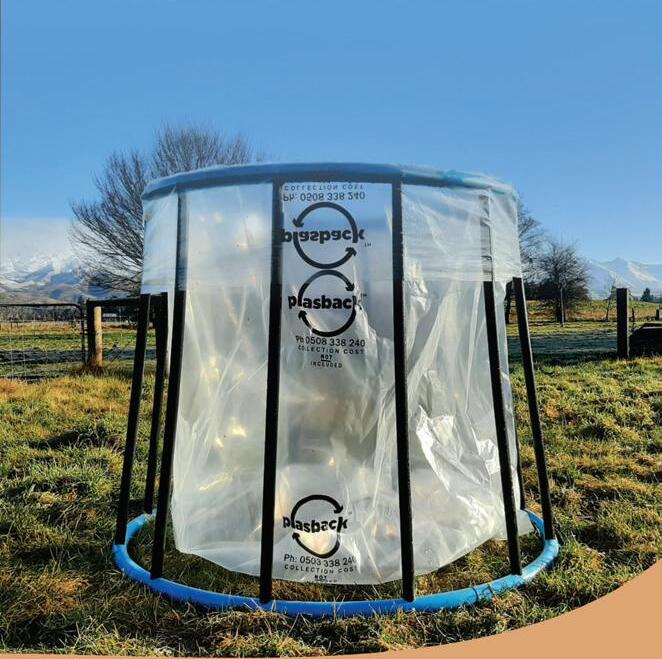










Case IH is expanding its popular Puma range in New Zealand, with a new model which featured at Fieldays in Mystery Creek last month.
] Article supplied by Case IH
While the Puma range has been well known and highly regarded for years, the latest Tier 3, long wheelbase configuration offers a refreshed model to the local market.
Seamus McCarthy, Case IH Product Manager ANZ, said the new model is designed for farmers looking for a reliable, no-fuss workhorse.
“It’s a great all-rounder that delivers pow-
er and performance while keeping it simple. With service intervals extended by 25%, over the previous Tier 3 range, it will help reduce the cost of ownership,” he said.
“There’s no AdBlue required, making it easier to use and maintain.”
McCarthy said the new Puma model came in three different configurations.
The base level tractor features a Powershift transmission, mechanical remotes, but
also 15% better torque and 23% more power than the previous Tier 3 Puma in the range.
The next level up has electric remotes also in a Powershift transmission, while the top level offers a CVT with electric remotes, which can be optioned from the factory GPSready.
Available in 180hp, 200hp, and 220hp, the new Puma model offers a choice of Powershift or CVT transmissions, multiple spec
levels, and optional technology capabilities. Loader compatibility also adds to its versatility across different farming operations.
“This product expansion rounds out our Puma range perfectly, giving customers more choice across a variety of farming applications,” McCarthy said.
For more information, visit www.caseih.com/en-nz/ newzealand















































































The LDV Terron 9 is arriving in New Zealand in the Elite specification and is designed for those who, like farmers, demand more from their ute.
Bold in appearance and loaded with more performance, technology and comfort, the LDV Terron 9 Elite is as hard-working as our customers, who need a capable vehicle to get the job done right.
The ute is powered by a 2.5L turbo diesel engine producing 163.5kW power and 520Nm torque and can also haul heavy loads with an up to 3,500kg braked towing capacity.
Ideal for Kiwi farmers, rural, fleet and corporate customers, it is a genuine 4WD workhorse, equipped with multiple terrain modes, and off-road expert information, including altitude, compass, approach angle and more.
The Terron 9 Elite is the real deal and even features a wading sensor to help the driver calculate the depth while driving through water.
Designed to assist with an impressive 1100kg payload, and a spray-on tray liner with four fixed tie-down points, the Terron 9 Elite has the strength and capability to suit any commercial farming use or worksite and will help Kiwi businesses keep working harder every day.
Then when it’s finished the heavy lifting

on-site, you can pack up the Terron 9 Elite and hit the highway for family getaways. Kitted out with high grade cloth seat covers, a 6-way powered driver’s seat, and a 4-way manual adjustable passenger seat, comfort is not compromised.
Technology is also at the forefront of the LDV Terron 9 Elite and features include a
360 camera, Daytime Running Lights (DRL) and LED headlights, plus a dual 12.3” infotainment screen and instrument cluster and Wireless Apple CarPlay and Android Auto connectivity.
There’s no scrimping on safety either with Lane Keep Assist, Speed Limit Recognition and Blind Spot Monitoring System all standard features.
LDV Terron 9 Elite highlights:
• 3500kg braked towing capacity
• 2.5L turbo diesel engine producing 163.5kW power and 520Nm torque
• Payload 1100kg
• 360 camera
• 4WD with multiple terrain modes
• Daytime Running Lights (DRL) and LED headlights, auto headlights and auto high beam assist
• Dual 12.3” infotainment screen and instrument cluster
• Lane Keep Assist, Speed Limit Recognition, Blind Spot Monitoring System
• Keyless entry and start
• Leaf suspension which will help make the ute more capable.













H E T R A C T O R O F
T H E Y E A R I S H E R E .






At Agritechnica 2023, Fendt unveiled the completely newly developed Fendt 600 Vario series to the world, winning both the “Farm Machine 2024” Award in the mid range tractor category as well as the prestigious “Audience choice award”. The accolades have continued to roll in since, more recently winning the compact four-cylinder ‘MidPower Tractor of the Year 2025’ at EIMA in Italy. The multi award winner has now landed on New Zealand shores, ready to tackle the challenges of Kiwi farming and beyond.
Compact in size but powerful in performance, the new 600 Vario is built with the innovation you'd expect from Fendt. At its core is the Fendt VarioDrive transmission for intelligent power delivery, the new AGCO Power CORE50 low-revving engine, and the FendtOne operating system — designed to make long working days more productive and less tiring. In addition, a suite of new options is available, including Variogrip and reversible fan.
Don’t just take our word for it, though. Put the Tractor of the Year to the test and see for yourself. Speak to your local Fendt dealer today about a 600 Series demo drive.













The bull sales session is now over, and reports are that the beef industry is in very good heart.
PGG Wrightson legend John McKone, told me there has never been a better time to own a beef cow.
Plus, he says there is no shortage of cow numbers despite the forestry taking over areas down south.
It seems the cows that were driven off the land as forestry smothered the grazing areas, my words not Johns, have been absorbed into other herds.
Terminal sires have become strong as far as demand is concerned so across the board, beef is certainly in a good place.
Sheep meat is also looking good as exporters continue to get solid prices.
I admire Silver Fern farms on their marketing here and overseas enhancing our image and that of farming in general.

] by Solis Norton
In this way passed my first Environmental Defence Society conference recently in central Auckland amongst the lawmakers, scientists, and advocates. The EDS is about improving environmental outcomes.
An excellent event, it was full and informative across topics ranging from the ocean to urban design, from energy to habitat restoration. Hats off and thank you to the team who by all accounts have never failed to host a valuable event.
Reform of the Resource Management Act was a hot topic.
The kid at their first circus invariably notices peculiarities to the show as well as the pomp and ceremony. Look how the trapeze hangs from the roof… I saw the Ring Master at the supermarket doing his shopping yesterday... How come the tigers don’t eat the monkeys?

Flying in the face of the mainstream media who only want to talk about dirty dairying, animal abuse and cruelty, all unsubstantiated, Silver Fern Farms are telling local consumers about their planting of trees to enhance our countryside, and over-
seas, they again push our clean green image.
I am at a loss about how to convince local consumers that red meat is a bit more expensive than it has been, because of the country being dragged out of recession by the
farming industry. There is no one so deaf as he who doesn’t want to hear, as my parents used to say.
On the back of the sheep, as it were, I am thrilled that the current government opened the government department doors to wool for carpets and insulation.
How much of the slap in the face was it when their departments were instructed to only buy imported synthetics when wool is a very well-established better product. What I refer to as staple produce has come out into the sunshine.
Horticulture is also doing very well, but as we both know, meat, wool and dairy are the big earners.
Perhaps if interest rates keep falling people’s opinions will change slightly, as long as the mainstream media stop their smear campaign against the farming industry.
The circus is most spectacular in young eyes who’ve never seen the like nor knew nought of circuses prior.
Similarly, at EDS I was struck by the chasm between regulatory rule sets and the natural systems they would control. No psychologist, yet comfortably able to distinguish between breeds of dogs, I wondered at the incongruous alignment between rules and nature.
One typically angular, distinct, and divisive, the other kaleidoscopic mosaics and patchwork so diverse and intertwined that it quite literally all moves as one.
Creating two acts in place of the RMA is a case in point. Distinguishing between land use planning and natural resource management seems like a circus all on its own.
The frugal dystopian would spook at the resource and time consumed. That time compounding confusion. That resource travelling down the thermodynamic energy cascade and through the bank to end up as (among other things) more boats and beach houses on the Hauraki Gulf. Precisely what, ultimately, the RMA ought to stop.
To replace the Act with a genuinely better framework may require more use of the word ‘no’ rather than the phrase ‘no, unless.’ Yet the ‘unless’ piece enables the growth to which we are accustomed. Polycrises and wicked issues indeed.


